Here are 50 photos of wildly modified bōsōzoku-style rides from Japan (via alljapanexpress, Speedhunters, Sunny Speed Style, Inokoshientotsu).


















































Here are 50 photos of wildly modified bōsōzoku-style rides from Japan (via alljapanexpress, Speedhunters, Sunny Speed Style, Inokoshientotsu).


















































In 1936, Shōnen Club magazine published an illustrated article entitled "World Transportation Invention Competition," which took a look at the future of transportation.

Sphere-wheeled car -- Reiji Iizuka, 1936
This futuristic car with spherical wheels, illustrated by Reiji Iizuka, is based on an idea from a German inventor. The vehicle's tires -- a pair of oversized rubbery spheres -- offer a smoother ride than the conventional tires on a four-wheeled car, and they act as a cushion in the event of an accident.
* * * * *

Amazingly swift flying machine -- Matsujirō Murakami, 1936 [+]
This ultra-fast airplane, illustrated by Matsujirō Murakami, is based on a design by an American inventor. The vehicle is powered by propellers that blast air through a pair of large ducts.
* * * * *

Ship with built-in boat dock - Gyosui Suzuki, 1936 [+]
This safety-conscious passenger ship, illustrated by Gyosui Suzuki, is based on an idea by an American inventor. The hull of the ship is designed to open up in an emergency, and it contains a small fleet of boats that allow people to escape quickly and safely.
* * * * *

Mountain monorail - Kikuzō Itō, 1936 [+]
The design for this innovative monorail train, illustrated by Kikuzō Itō, originated with an American inventor. The two-wheeled design looks rather precarious, but the powerful airplane propeller and tail fin manage to keep the train upright and stable as it zips through the mountains. Extra wheels extend out from the sides when the train comes to a halt.
* * * * *

High-speed tank-style boat - Matsujirō Murakami, 1936
This high-speed battle boat, illustrated by Matsujirō Murakami, is also inspired by an American design. A pair of caterpillar tracks allow the vessel to roll across the water like a tank on land.
[Source: 昭和之雜誌廣告・ナツカシモノ]
Igarashi Design has dreamed up a series of ultramodern concept vehicles, including the bikes, mini-copter, wheelbarrow and snowmobile shown below. [Link]
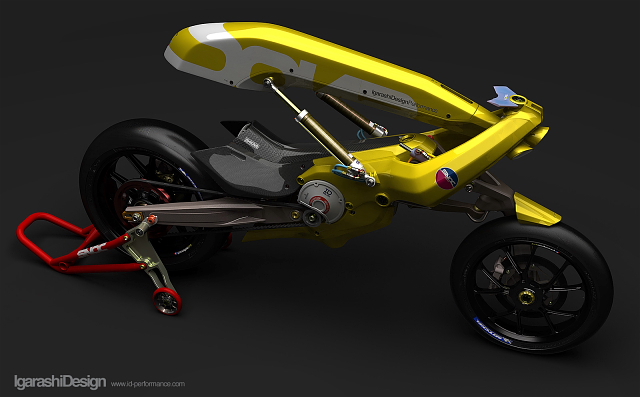
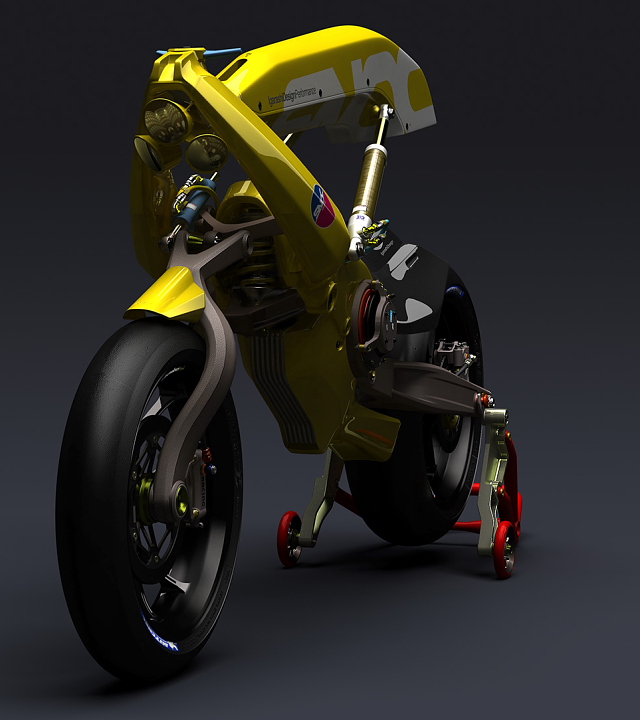
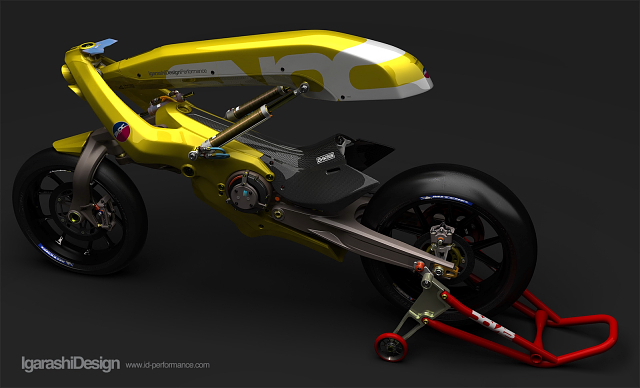
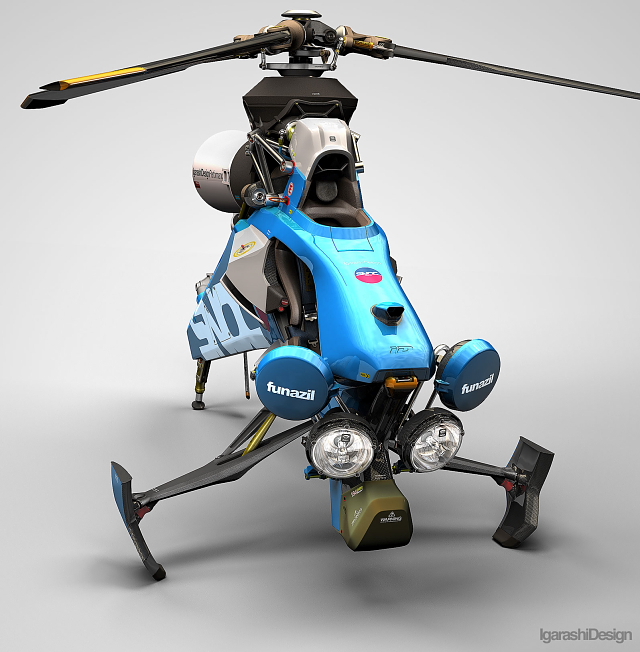
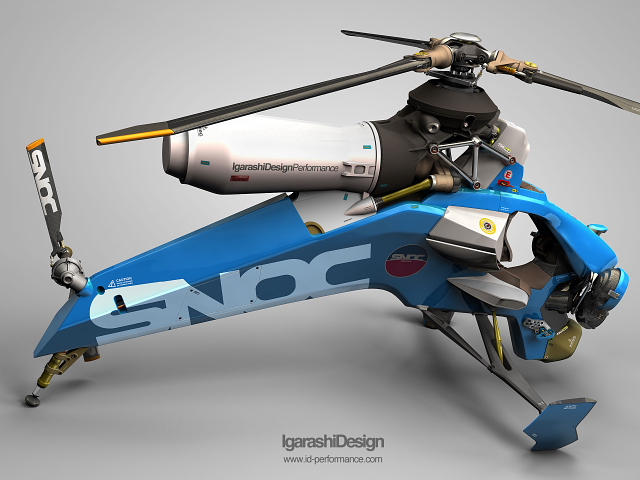
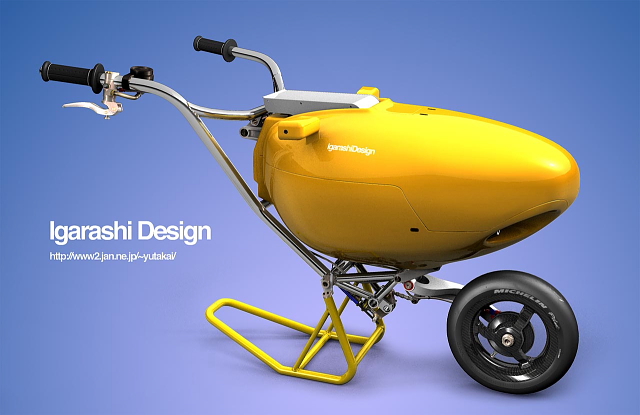
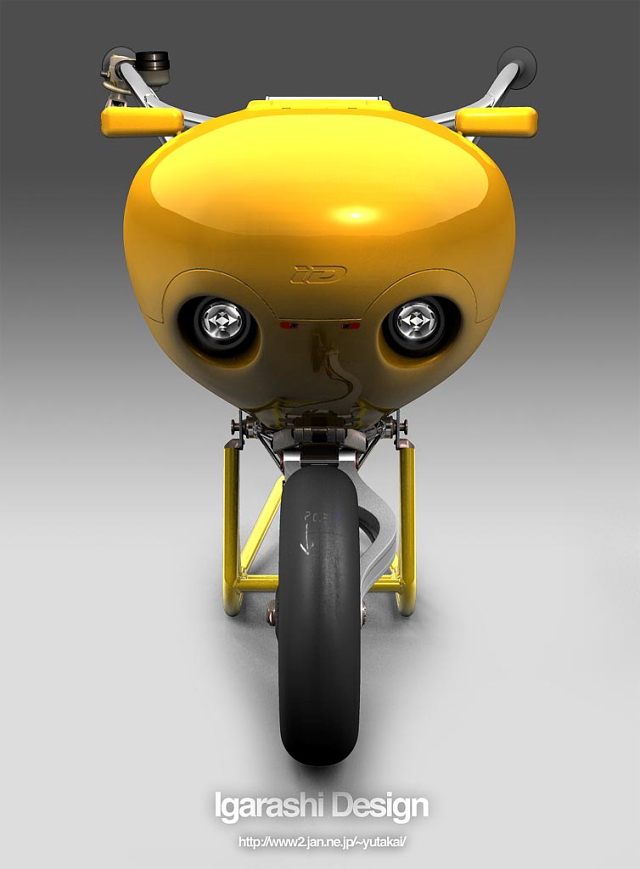
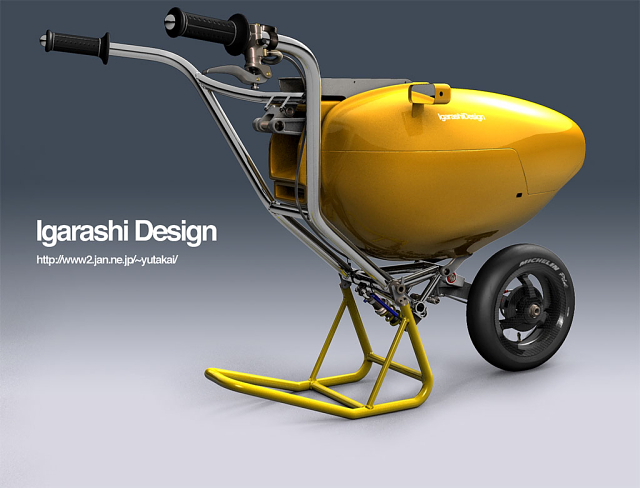
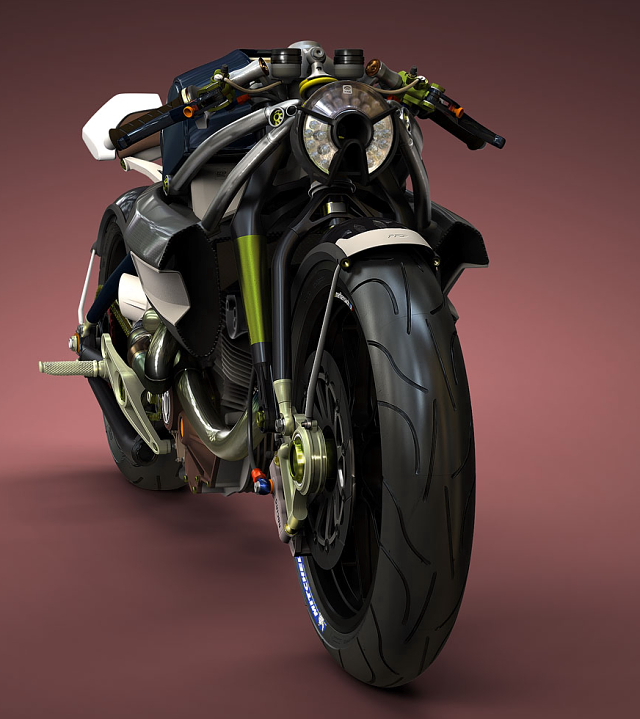
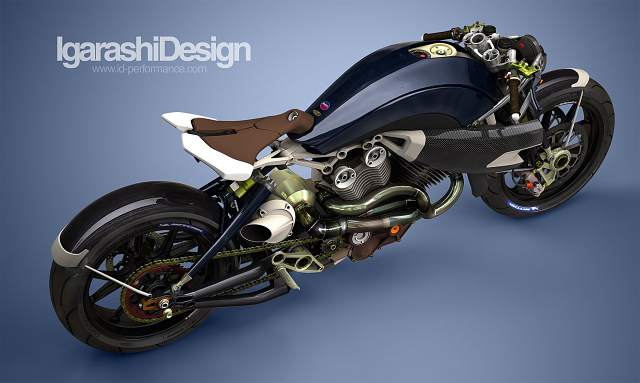
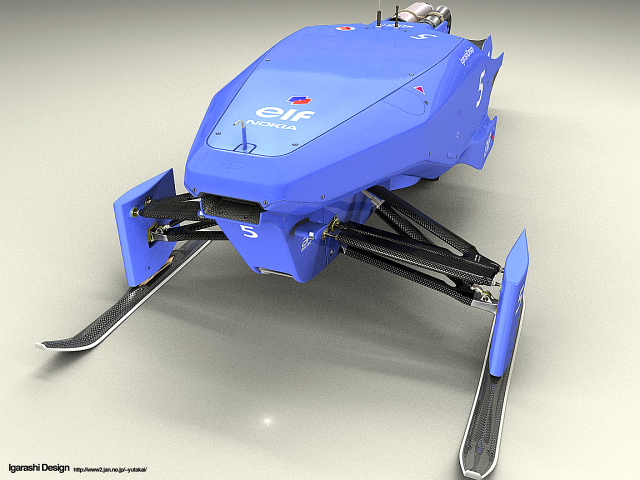

Japanese construction firm Shimizu Corporation has developed a series of bold architectural plans for the world of tomorrow. Here is a preview of seven mega-projects that have the potential to reshape life on (and off) Earth in the coming decades.
* * * * *
- Luna Ring
In response to the ever-growing demand for energy, Shimizu has developed plans for the Luna Ring, a project that seeks to transform the Moon into a massive solar power plant.
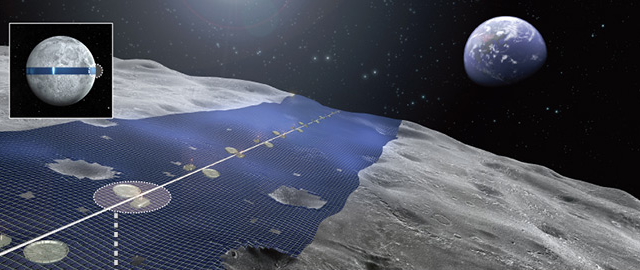
Luna Ring's 11,000-kilometer (6,800-mile) "solar belt" spans the Moon's equator
Electricity collected by the Luna Ring's enormous "solar belt" is relayed to power conversion facilities located on the near side of the Moon. There, the electricity is converted into powerful microwaves and lasers, which are beamed at Earth. Terrestrial power stations receive the energy beams and convert them back to electricity.
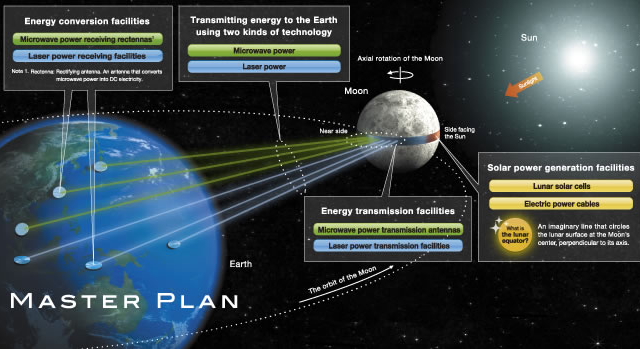
Luna Ring feeds power to energy-hungry Earth
The solar power plant is built mainly using lunar resources. Moon rocks and dust are used to manufacture building materials such as cement, bricks and glass fibers. Water is produced through a chemical process involving lunar soil and hydrogen.
Large machinery and equipment from Earth is assembled in space and landed on the lunar surface for installation. Much of the construction is performed by robots controlled by people on Earth, and a team of human astronauts is stationed on the Moon to supervise the robot operations. [More]
* * * * *
- Green Float
Shimizu's Green Float project seeks to build "botanical" cities that float like giant lily pads in the equatorial Pacific, where sunlight is plentiful and the impact of typhoons is minimal.

Lily pad-like cities at sea
Each floating island features a 1,000-meter (3,300-ft) central tower. The lower section of the tower serves as an industrial area with offices and factories employing 10,000 workers, while the upper section functions as a residential area for 30,000 people. Another 10,000 residents live at ground level, in low-rise townhouses near the beach.
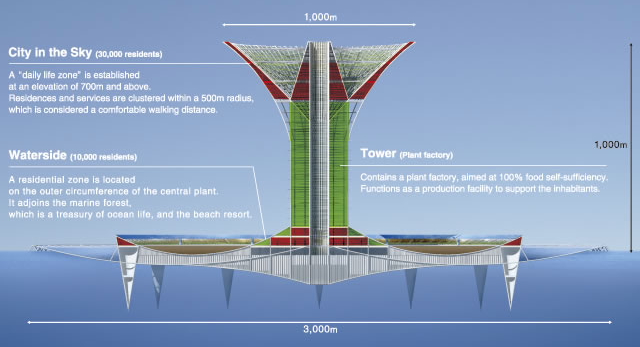
Green Float islands are 3 kilometers (1.9 mi) in diameter and support a population of 40,000
The typical Green Float island landscape consists of forests, grasslands, waterways and reservoirs. A portion of the land is set aside for agriculture and some of the shallow beaches are used for cultivating seafood, making the islands 100% food self-sufficient.
The eco-friendly Green Float cities rely on a variety of natural energy sources, including wave, wind and solar power, as well as ocean thermal energy conversion.
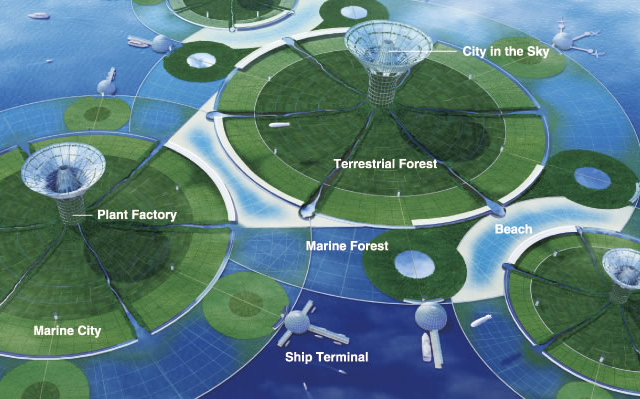
Green Float islands join to form a floating metropolis
Green Float islands are built upon a floating base of connected hexagonal tubes that each weigh 7,000 tons and measure 20 meters (65 ft) across and 50 meters (165 ft) deep. The primary structural material for the honeycomb-like base, as well as for the island's buildings, is magnesium alloy. Seawater -- which is composed of 0.13% magnesium by weight -- is an abundant source of magnesium. One ton of the material can be extracted from 770 tons of seawater. [More]
* * * * *
- Mega-City Pyramid
Shimizu's proposed Mega-City Pyramid is a self-contained city for one million people.

The Mega-City Pyramid stands 2,000 meters (1.25 miles) high
The pyramid-shaped hyperstructure is an assembly of skyscrapers suspended within a skeleton of 350-meter (1,150-ft) long shafts made from lightweight materials (such as carbon and glass fibers).
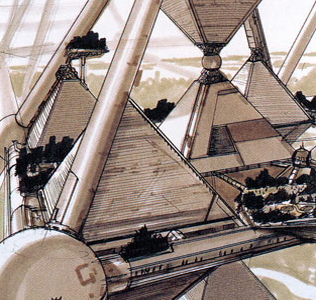
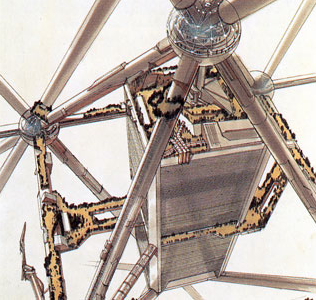
Residential buildings (left) and office complexes (right) inside Mega-City Pyramid
The skyscrapers within the Mega-City Pyramid are home to residences, offices, research institutions, shopping and entertainment centers, and other facilities. The connecting shafts, which measure from 10 to 16 meters (30 to 50 ft) in diameter, contain the city's plumbing, electrical and communication systems, as well as a network of trains, escalators and moving walkways.
+ Video
The proposed hyperstructure has a footprint of approximately 8 square kilometers (3 sq mi), and it features an open-air construction that allows sunlight to reach the interior. A network of optical fibers transports sunlight into poorly-lit areas.
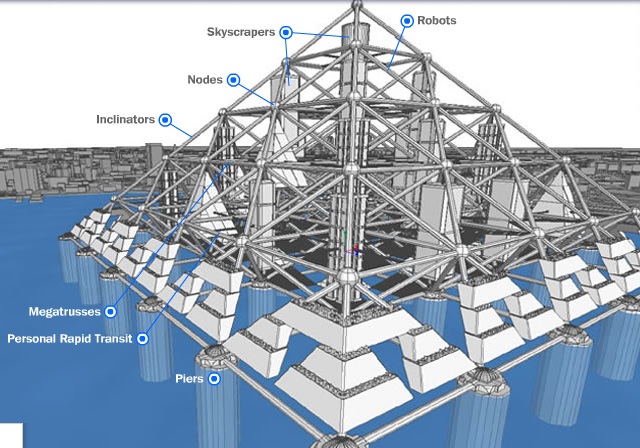
Construction of the massive Mega-City Pyramid is facilitated by robots and automated assembly systems, as well as by the use of standardized parts and materials. [More]
* * * * *
- Space Hotel
To capitalize on the coming boom in space tourism, Shimizu has developed plans for a space hotel in low-Earth orbit.
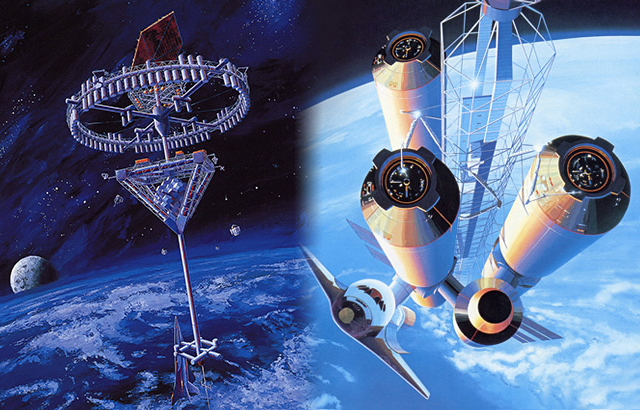
Shimizu Space Hotel, located 450 kilometers (280 mi) above Earth
The hotel -- which is powered entirely by solar energy -- features a microgravity recreational area where guests can enjoy sports, dining, and gazing at the Earth and stars. The 64 guest rooms and 40 staff rooms are situated in a ring measuring 140 meters (460 ft) in diameter. The ring rotates at a speed of 3 rpm to produce an artificial gravity of 0.7 g in the rooms. A 240-meter (790-ft) elevator shaft connects the hotel facilities with the docking port. [More]
* * * * *
- Lunar Bases
For the more adventurous offworld traveler, Shimizu has developed plans for lunar bases.
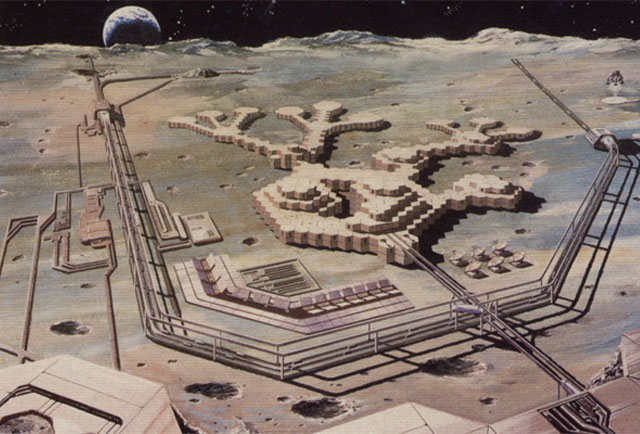
Lunar bases are the key to establishing a long-term human presence on the Moon
Shimizu's proposed bases feature a modular design of interlocking hexagonal units that can be arranged both horizontally and vertically. The modules are built using concrete made from lunar soil and rock. Tele-operated robots and automated assembly systems are used to construct the bases. [More]
* * * * *
- Urban Geo-Grid Plan
Back on Earth, Shimizu's Urban Geo-Grid Plan seeks to reduce urban congestion and improve the overall efficiency of Tokyo by placing a variety of city functions underground.
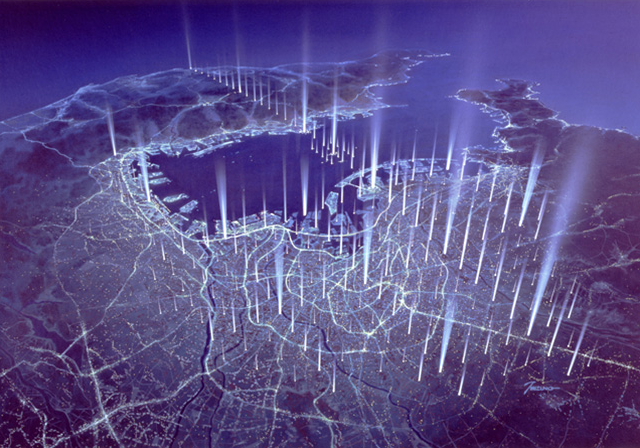
Urban Geo-Grid Plan puts much of Tokyo underground
The plan -- which covers an area extending from central Tokyo to the Boso Peninsula on the opposite side of Tokyo Bay -- consists of a vast underground network of so-called "grid points" and "grid stations." Grid points incorporate community facilities such as grocery stores, exhibition halls and public bathhouses, while the larger-scale grid stations incorporate office buildings, hotels, shopping centers, and train stations. An extensive underground transportation network connects the grid points and stations. Moving all these facilities underground frees up an enormous amount of street-level space that can be set aside for parks. [More]
* * * * *
- Desert Aqua-Net Plan
The Desert Aqua-Net Plan seeks to make the desert habitable by constructing a network of lakes and waterways.
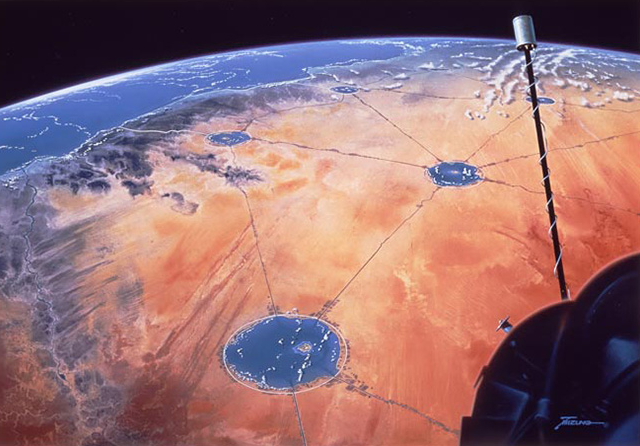
Desert Aqua-Net Plan brings water to the desert
The plan involves creating artificial lakes in low-lying desert areas. Islands are constructed in the middle of the lakes, which are filled with seawater channeled inland through canals. The canals connect the lakes to form an extensive water network.
Located 150 kilometers (95 mi) apart, the artificial lakes measure 30 kilometers (20 mi) in diameter and 20 to 30 meters (65-100 ft) deep. The canals running between the lakes measure 50 meters (165 ft) wide and 10 meters (35 ft) deep
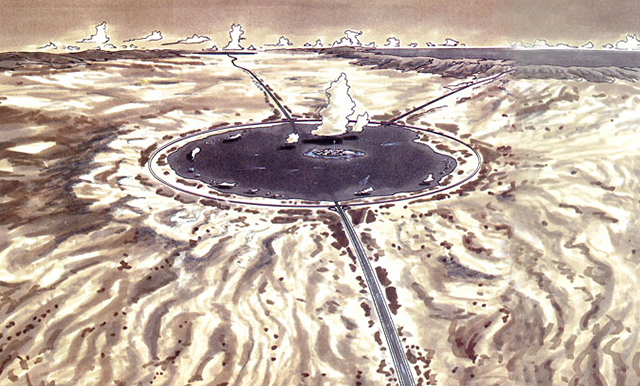
The lakes reduce temperatures and increase humidity in the surrounding areas, creating a comfortable and mild environment. Seafood and biomass resources (such as algae and seaweed) can be cultivated in the saltwater lakes, and the canals can be used to transport people and goods between the cities built on the artificial islands. [More]
+ Video
The winner of the 2010 Best Visual Illusion of the Year Contest is "Impossible Motion: Magnet-like Slopes," a three-dimensional object with slopes that appear to defy the laws of gravity when viewed from a certain angle. Created by engineering professor Kokichi Sugihara from the Meiji Institute for Advanced Study of Mathematical Sciences.
[Via: @GreatDismal, @anjkan, @dgroundsel]
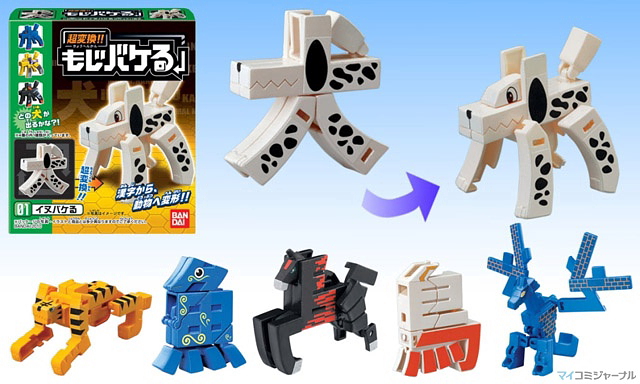
Japanese toy giant Bandai is set to release a series of nifty kanji figures that transform into the shapes of the animals they represent. The shape-shifting critters, called Mojibakeru (moji means "character" and bakeru means "to change"), come in six varieties -- 犬 (dog), 虎 (tiger), 魚 (fish), 馬 (horse), 鳥 (bird) and 竜 (dragon) -- and are available in black, white, yellow and blue.
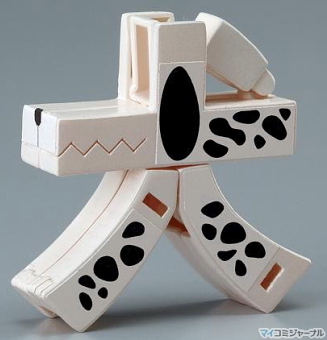
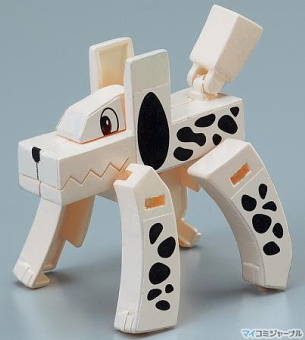
Inubakeru - The 犬 (inu, "dog") kanji transforms into a dog
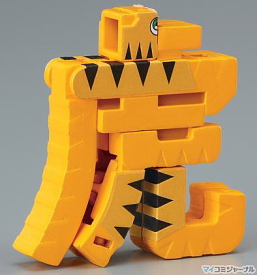
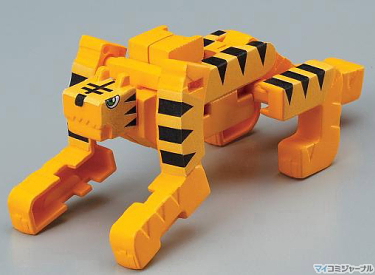
Torabakeru - The 虎 (tora, "tiger") kanji transforms into a tiger
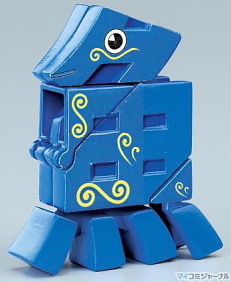
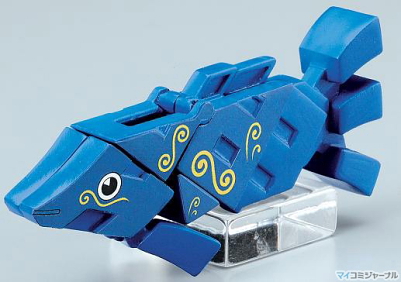
Uobakeru - The 魚 (uo/sakana, "fish") kanji transforms into a fish
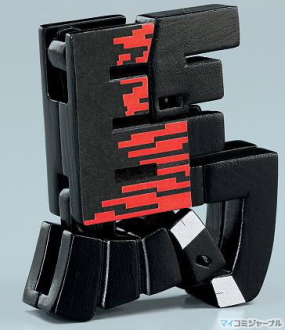
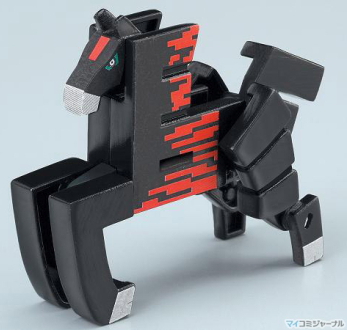
Umabakeru - The 馬 (uma, "horse") kanji transforms into a horse
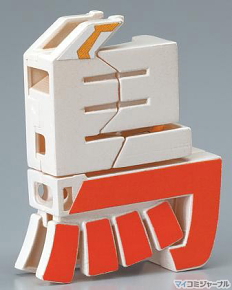
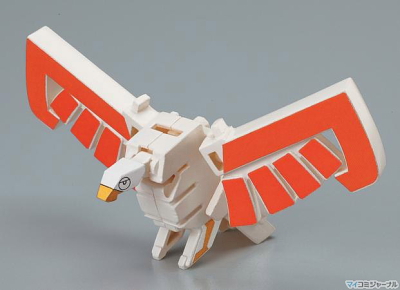
Toribakeru - The 鳥 (tori, "bird") kanji transforms into a bird
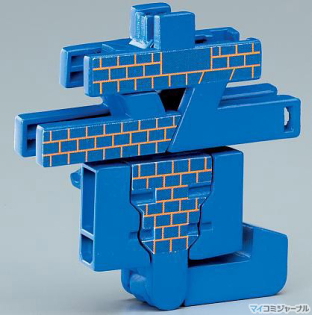
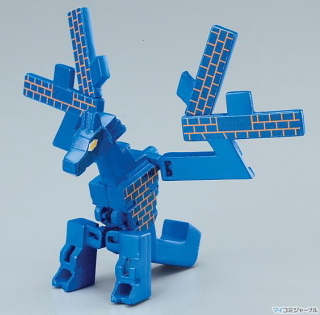
Ryūbakeru - The 竜 (ryū, "dragon") kanji transforms into a dragon
The collectible toys will be priced at 100 yen (about $1) each when they hit shelves in Japan next week.
Want to buy Mojibakeru? Email shop@pinktentacle.com for details.
Here is a collection of early 20th century travel posters for Japanese steamship companies (from the book Miwaku no Funatabi, published by the Museum of Maritime Science, 1993).
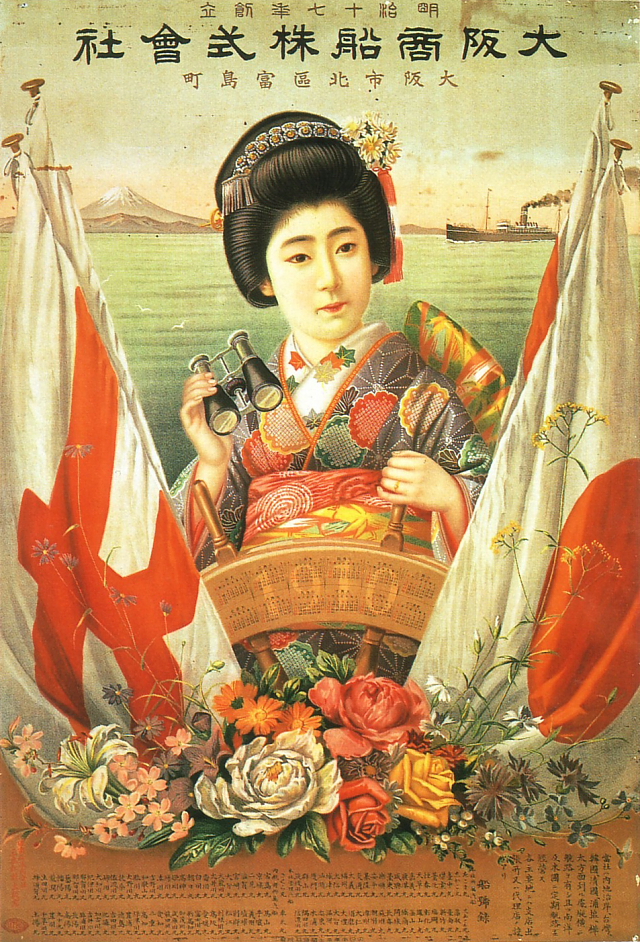
Osaka Mercantile Steamship Co., Ltd., 1909
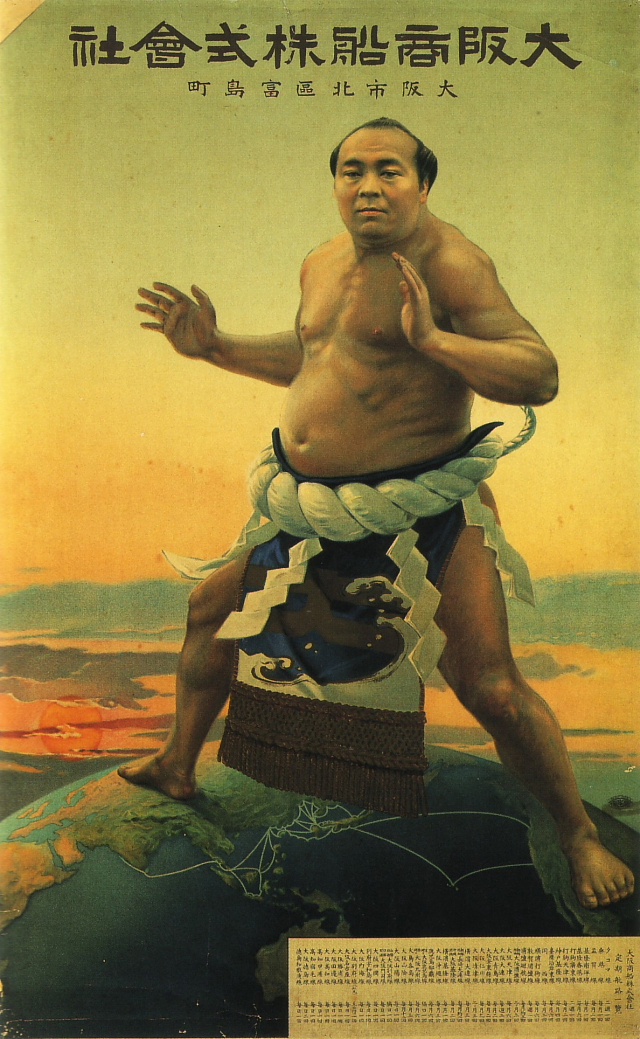
Osaka Mercantile Steamship Co., Ltd., 1916
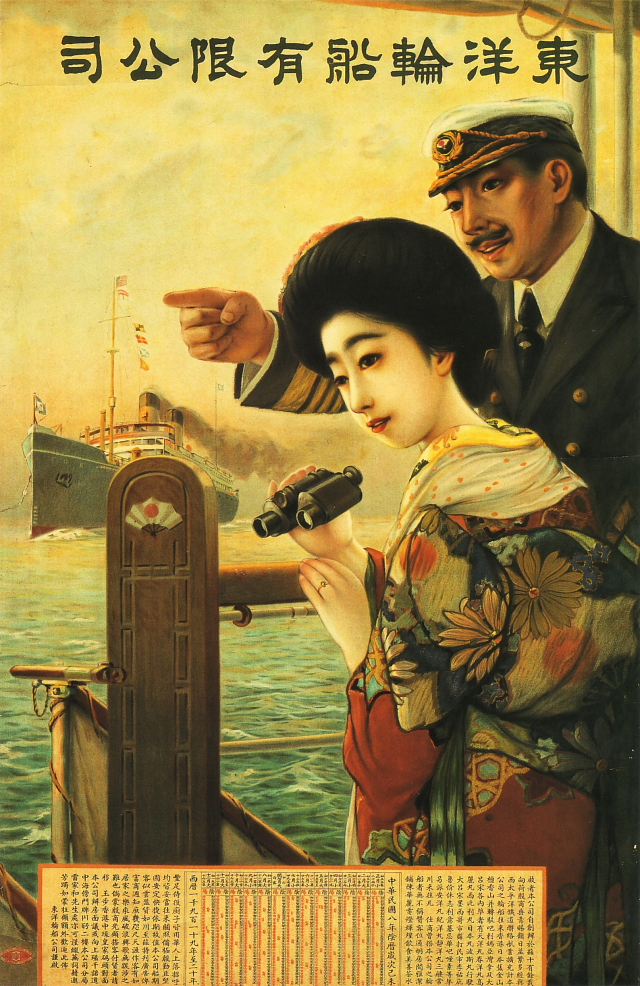
Oriental Steamship Co., 1919 (Chinese poster)
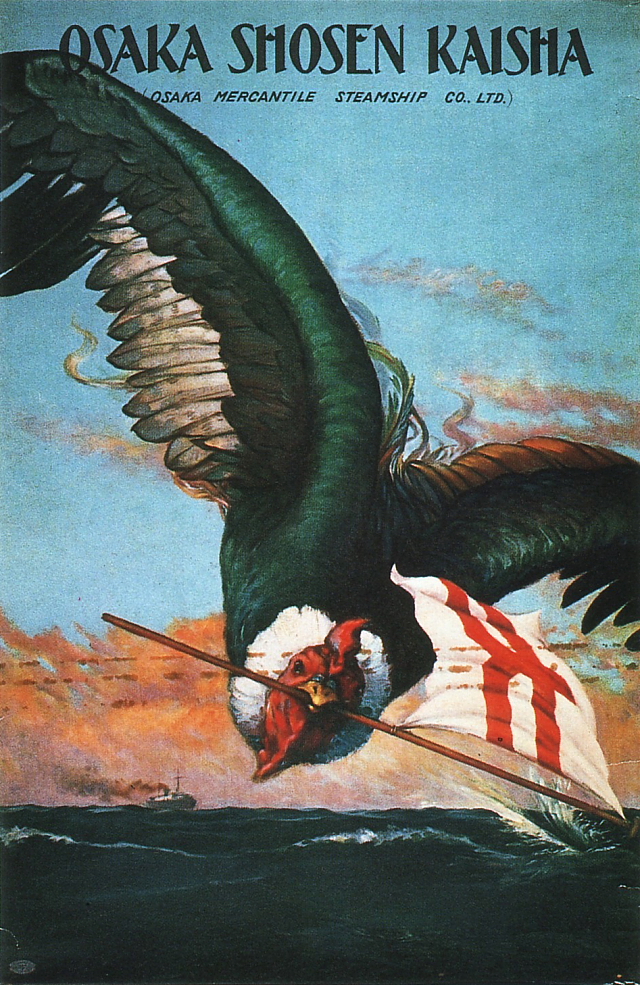
Osaka Mercantile Steamship Co., Ltd., 1916
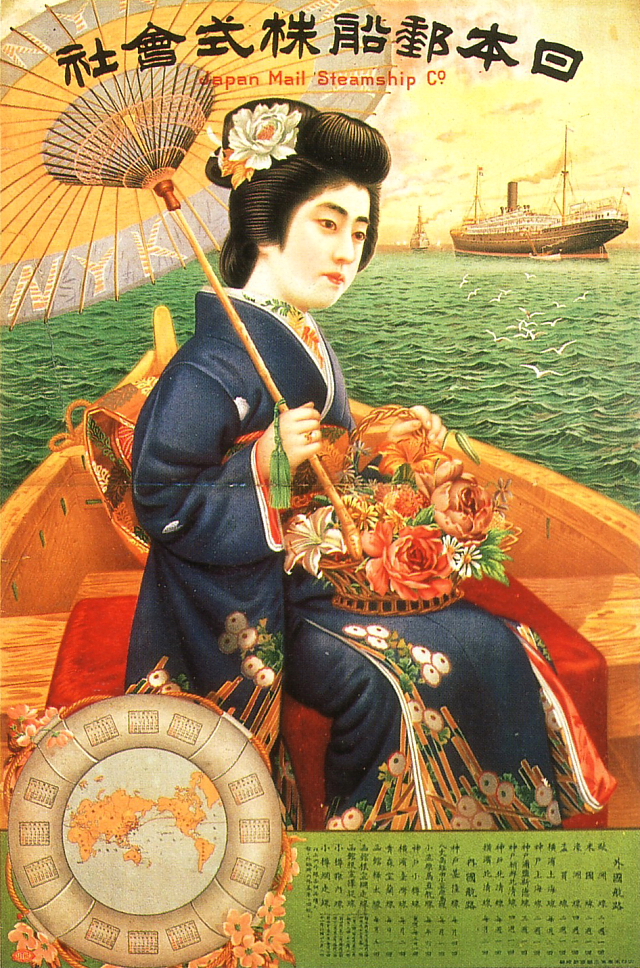
Japan Mail Steamship Co. (NYK), 1910
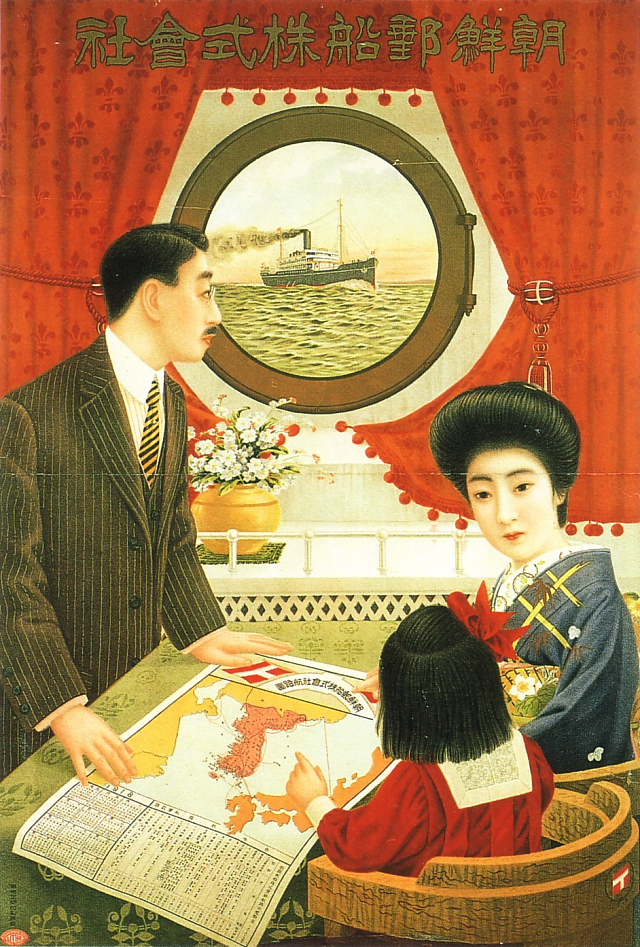
Korean Mail Steamship Co., 1918
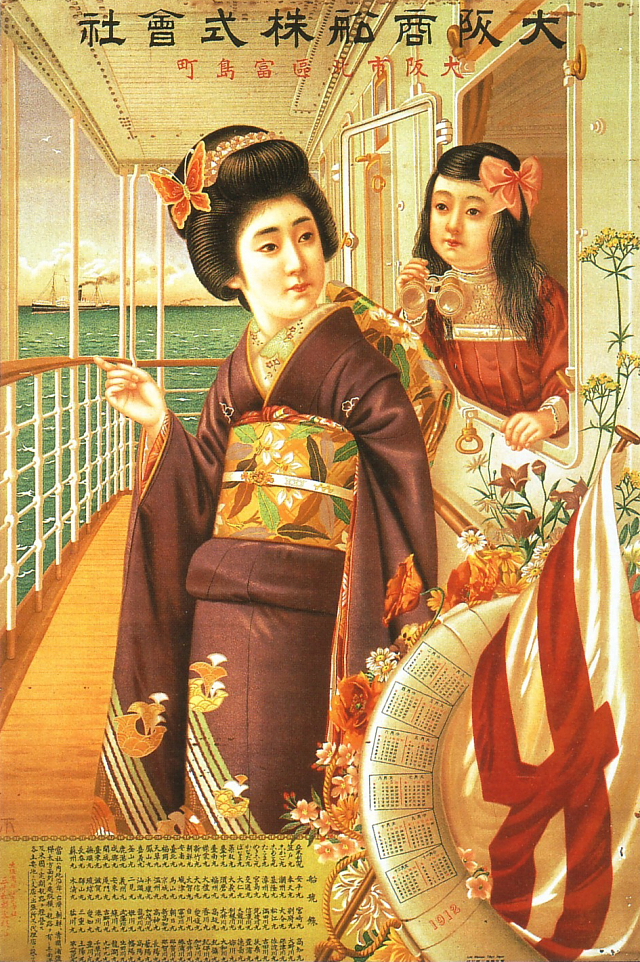
Osaka Mercantile Steamship Co., Ltd., 1912
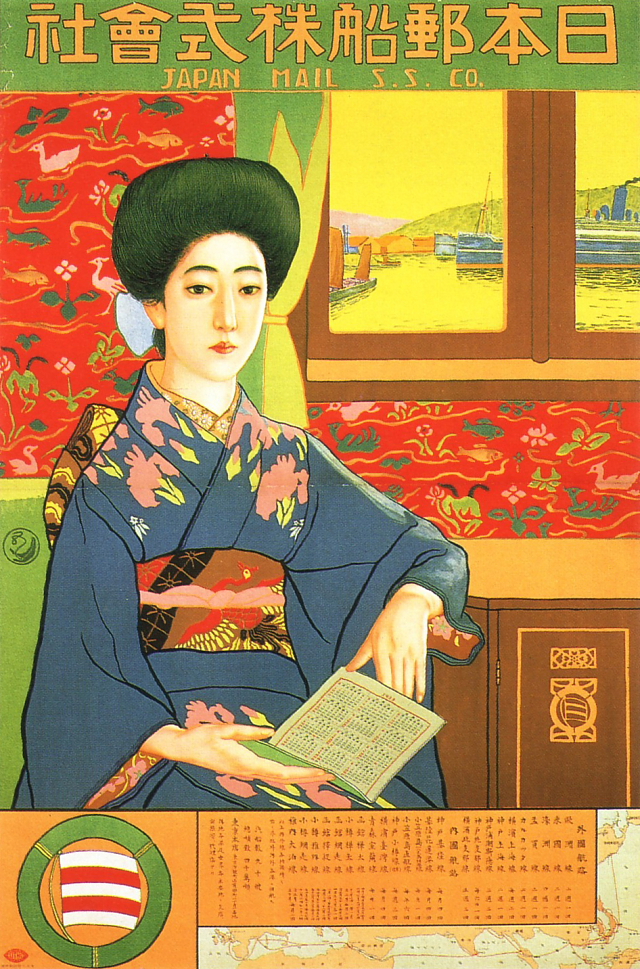
Japan Mail Steamship Co. (NYK), 1914
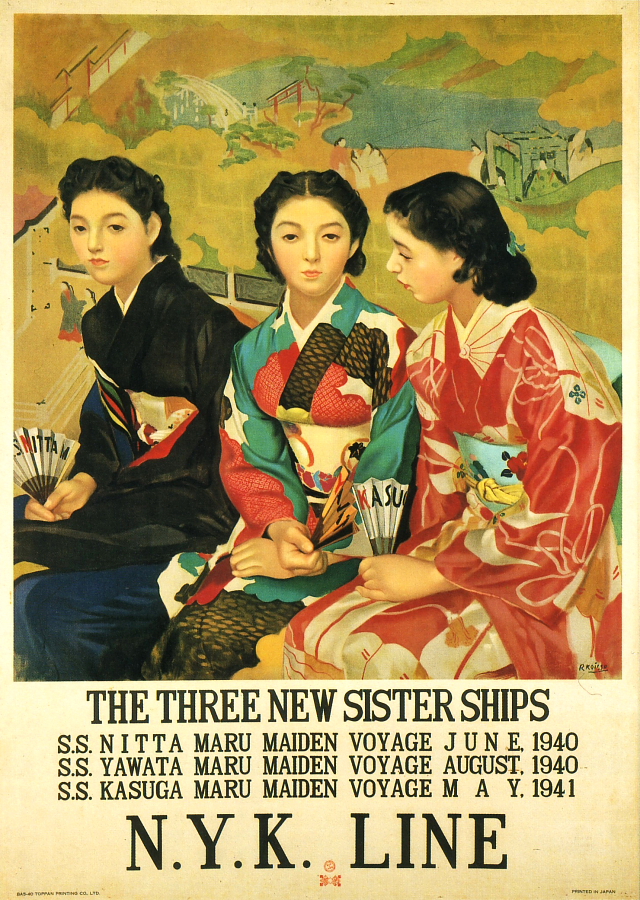
Japan Mail Steamship Co. (NYK), 1940
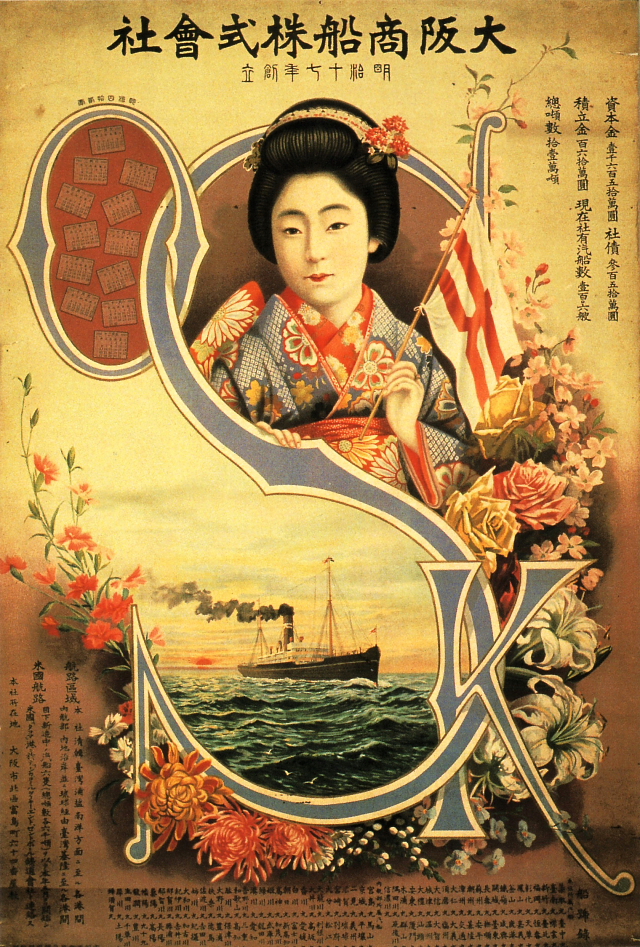
Osaka Mercantile Steamship Co., Ltd., 1909
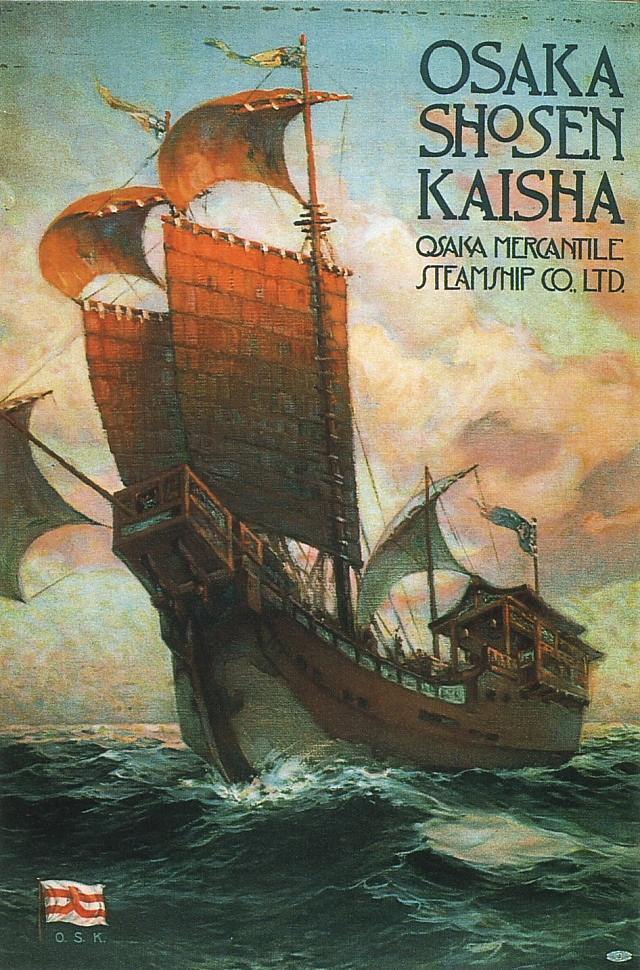
Osaka Mercantile Steamship Co., Ltd., 1916
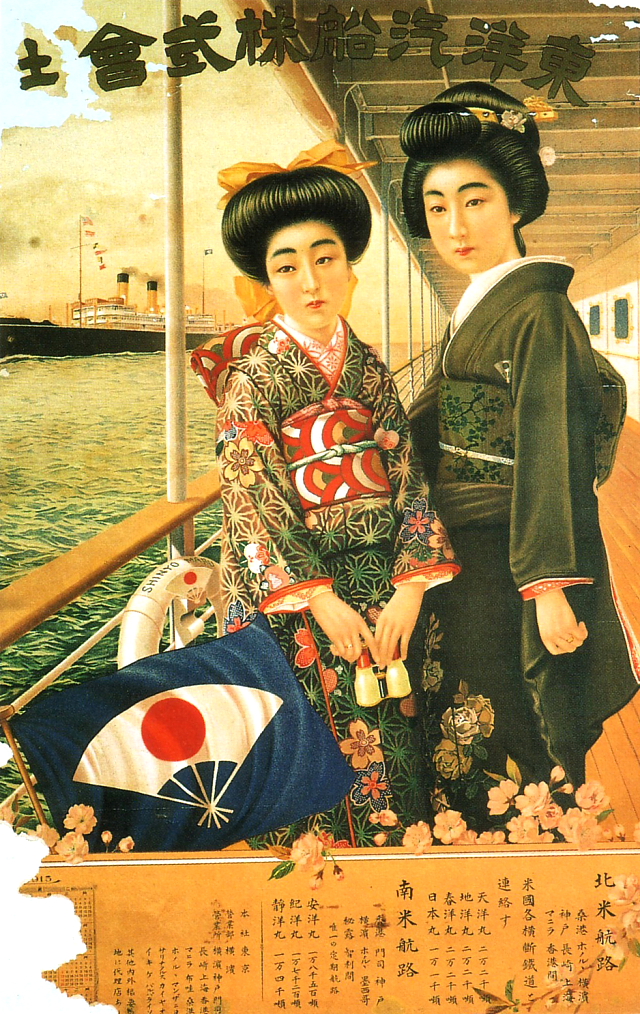
Oriental Steamship Co., 1914
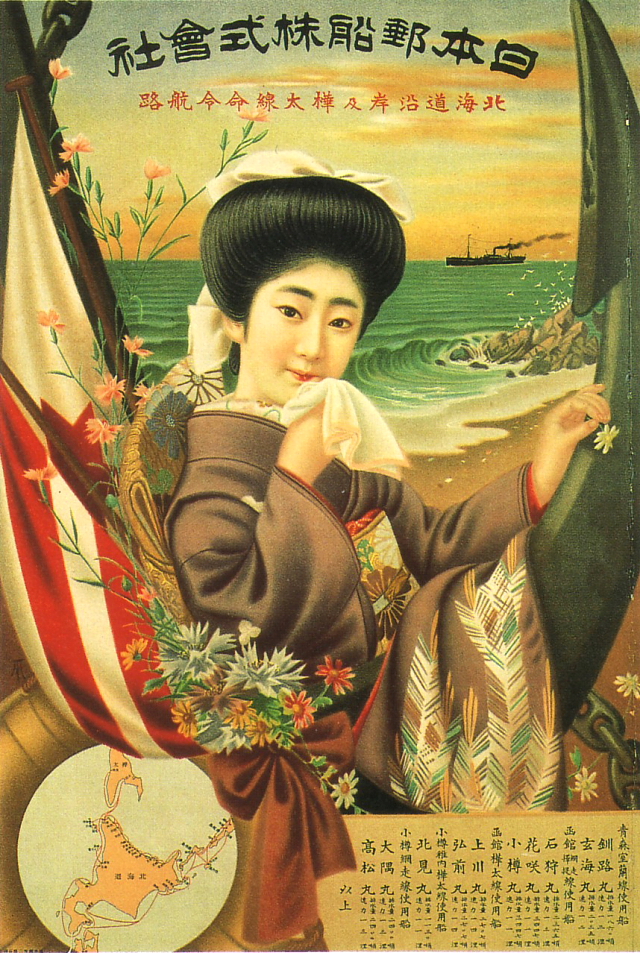
Japan Mail Steamship Co. (NYK), 1909
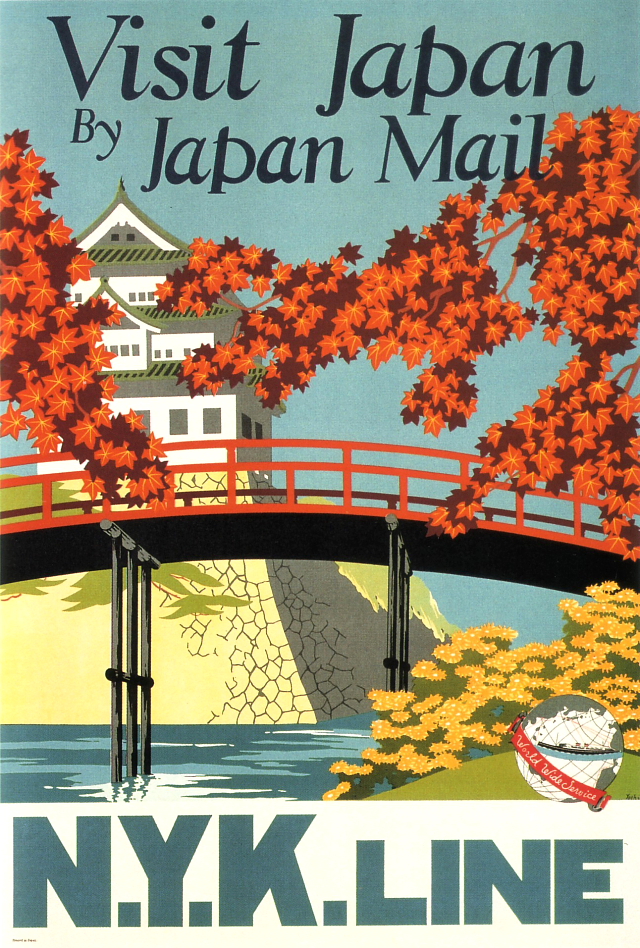
Japan Mail Steamship Co. (NYK), 1928-1930
Here is a collection of 50 Japanese town logos that incorporate stylized kanji characters into the design.
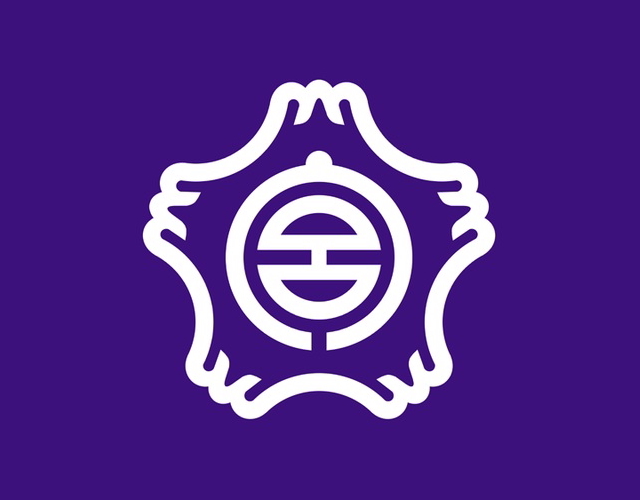
Fujinomiya (Shizuoka): The kanji 宮 (miya) inside a cherry blossom with Mt Fuji petals
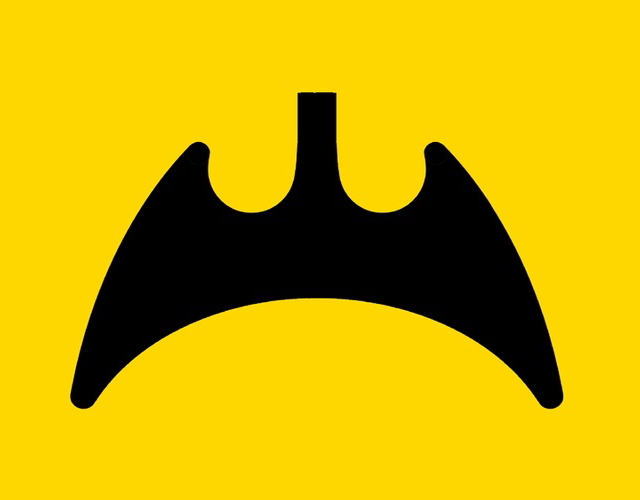
Fukuyama (Hiroshima): Bat-shaped 山 (yama) denotes old name of Kōmoriyama ("Bat Mountain")
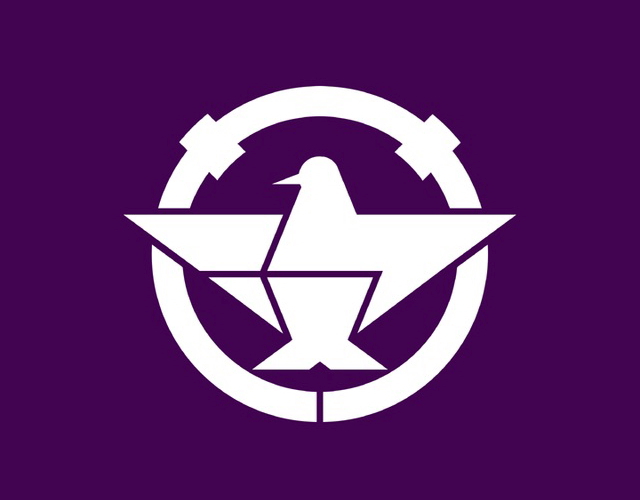
Ibaraki (Ōsaka): The kanji 茨 (ibara) in the shape of a pigeon
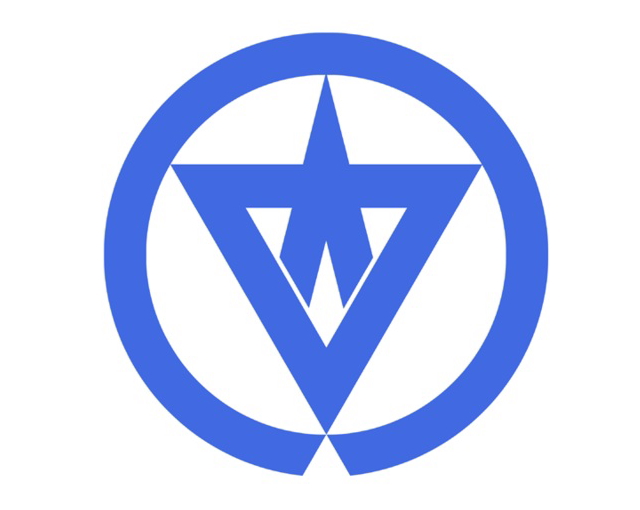
Nishino-omote (Kagoshima): The kanji 西 (nishi)
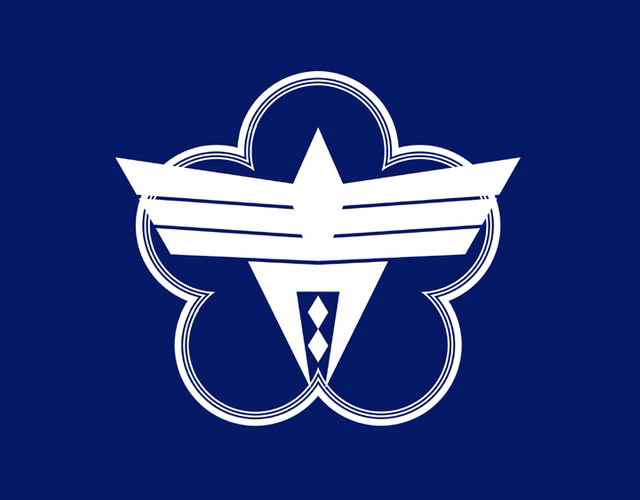
Ōme (Tōkyō): The kanji 青 (ao) and plum blossom (ume) signify 青梅 (Ōme)
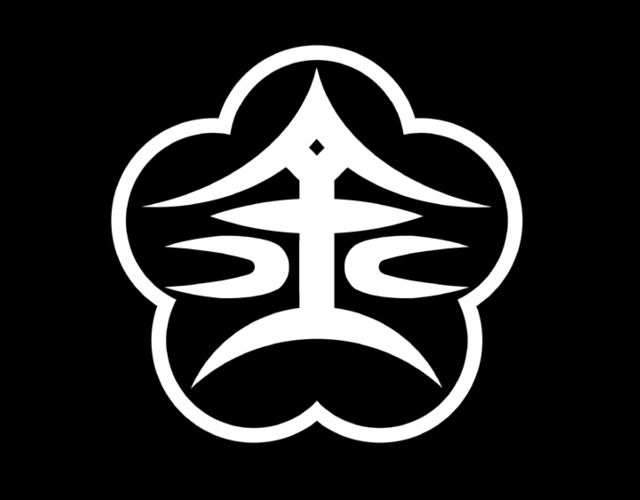
Kanazawa (Ishikawa): The kanji 金 (kana) inside a plum blossom, the Maeda clan symbol
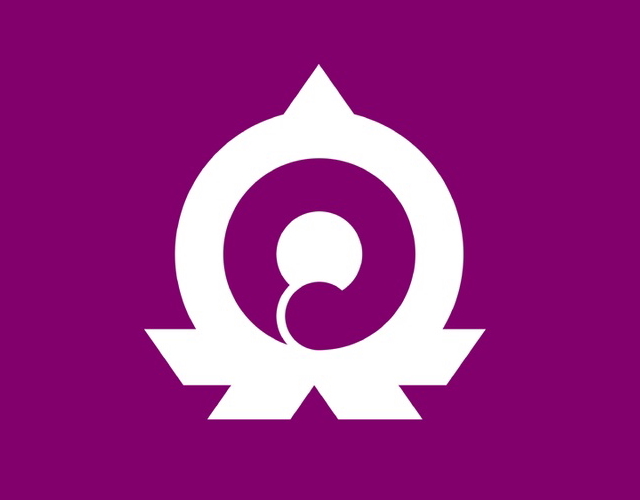
Okutama (Tōkyō): The kanji 奥 (oku)
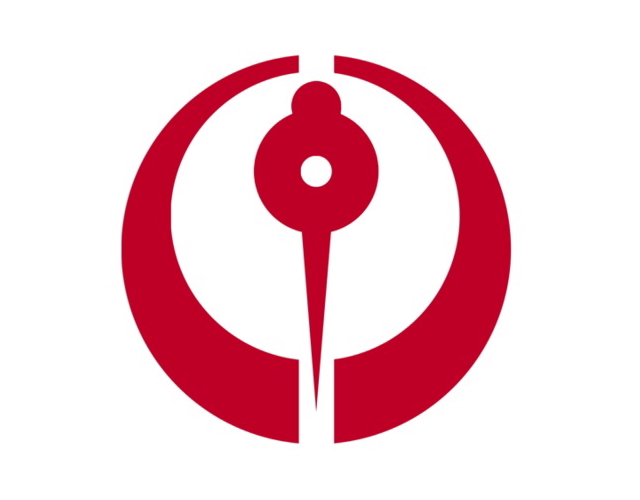
Hachinohe (Aomori): The kanji 八戸 (Hachinohe) in the shape of a crane (head and wings)
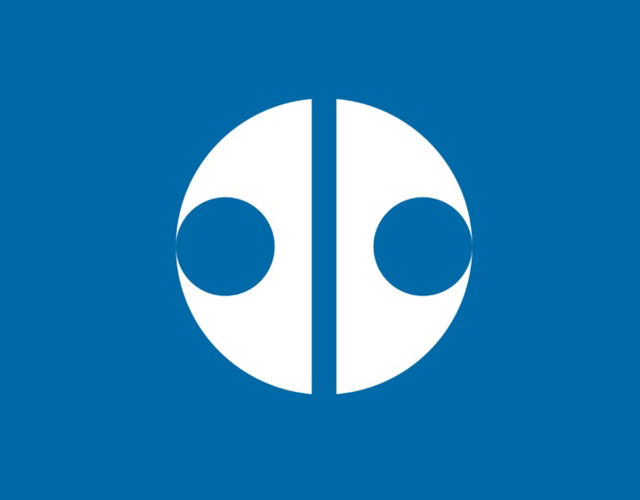
Kitami (Hokkaidō): The kanji 北 (kita) shaped like a sash weight
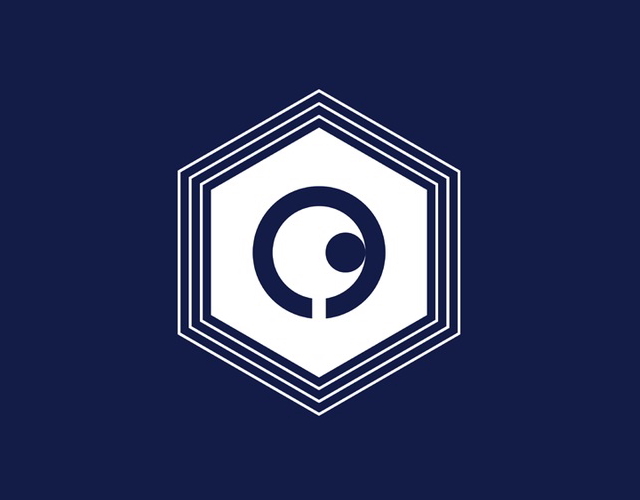
Yūbari (Hokkaidō): The kanji 夕 (yū) inside a hexagon representing coal
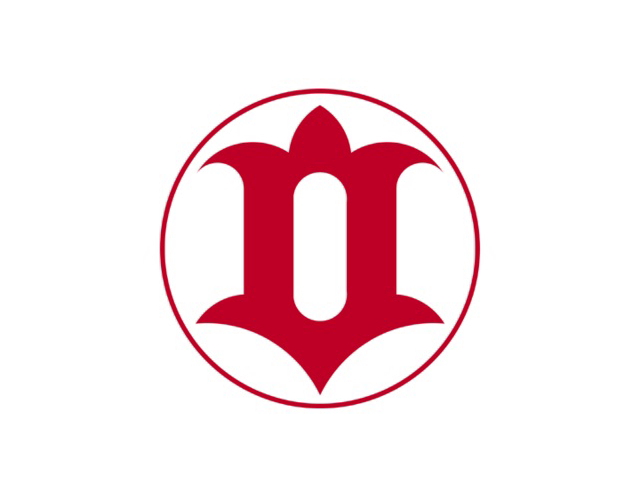
Hitachi (Ibaraki): A flower-shaped 立 (tachi) kanji inside a circle representing the kanji 日 (hi)
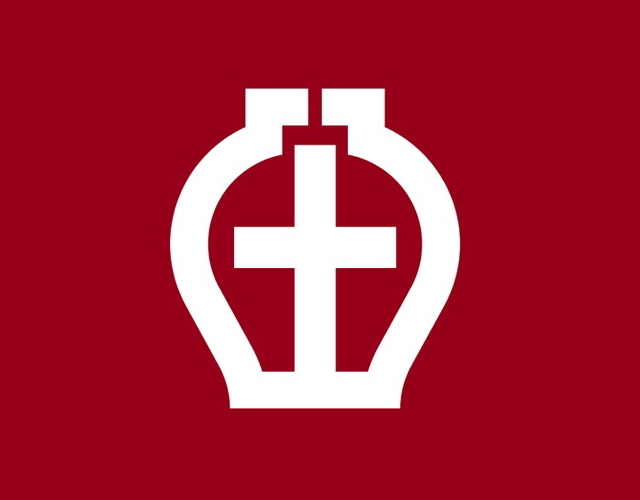
Seto (Aichi): The kanji 土 (tsuchi, or "soil") in a clay pot represents the local pottery industry
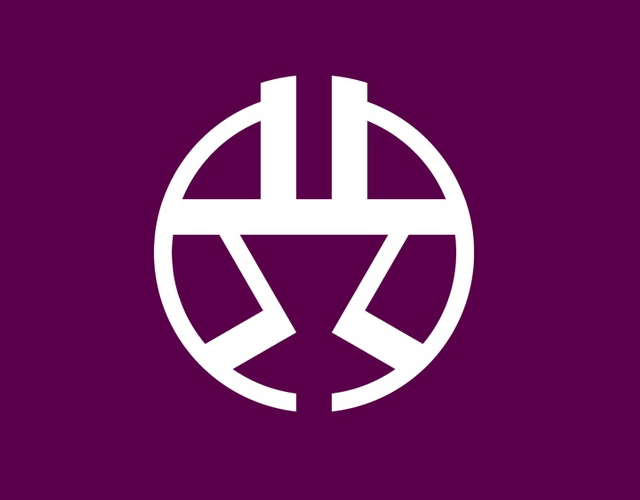
Shibuya (Tōkyō): The kanji 渋 (shibu)
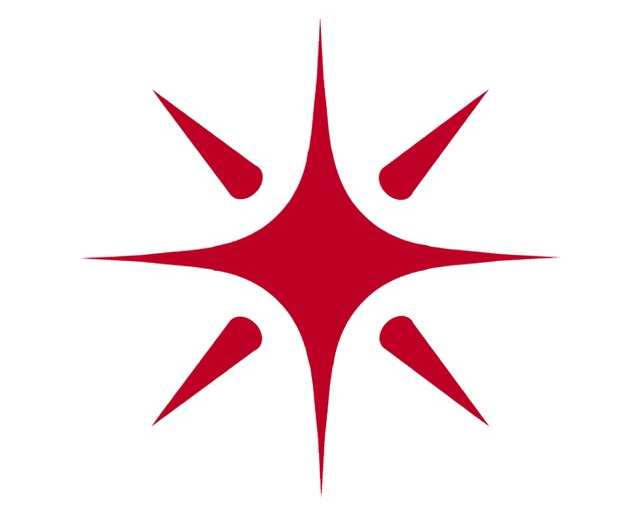
Yonago (Tottori): The kanji 米 (yona)
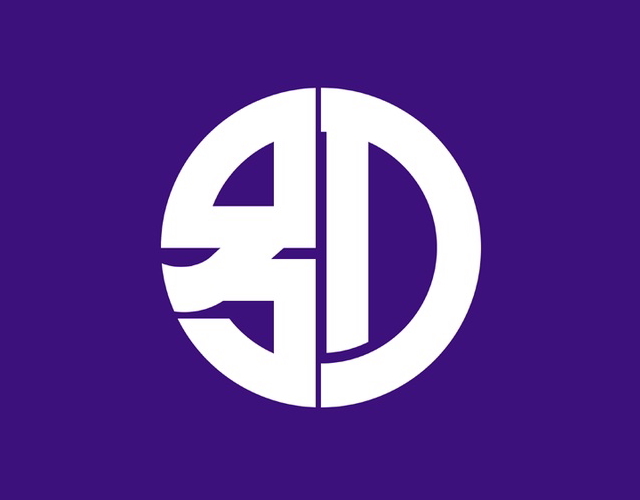
Beppu (Ōita): The kanji 別 (betsu), the first character in 別府 (Beppu)
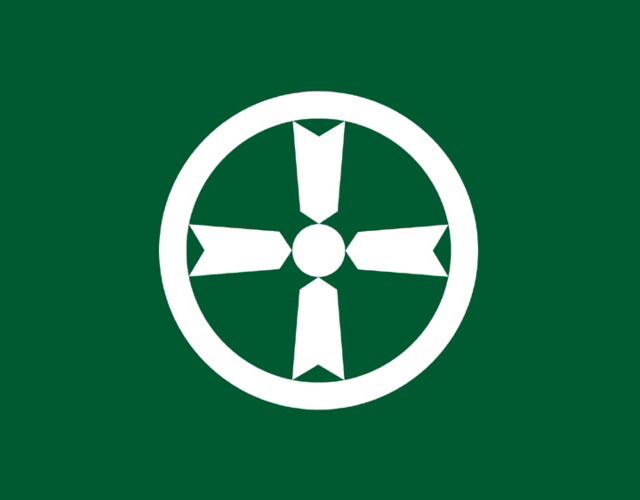
Akita: The kanji 田 (ta) symbolizing arrows, a reference to Akita Castle
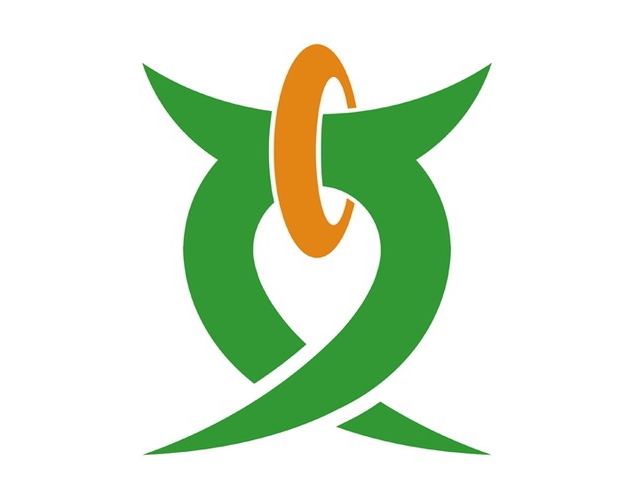
Azumino (Nagano): The kanji 安 (an), the first character in 安曇野 (Azumino)
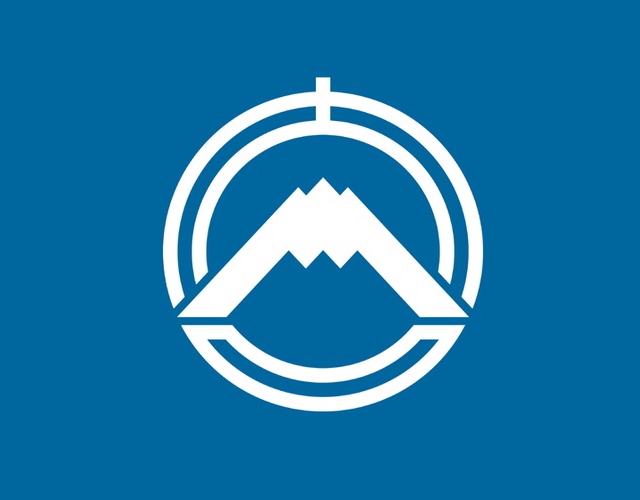
Fujiyoshida (Yamanashi): Mt Fuji and the kanji 吉 (yoshi)
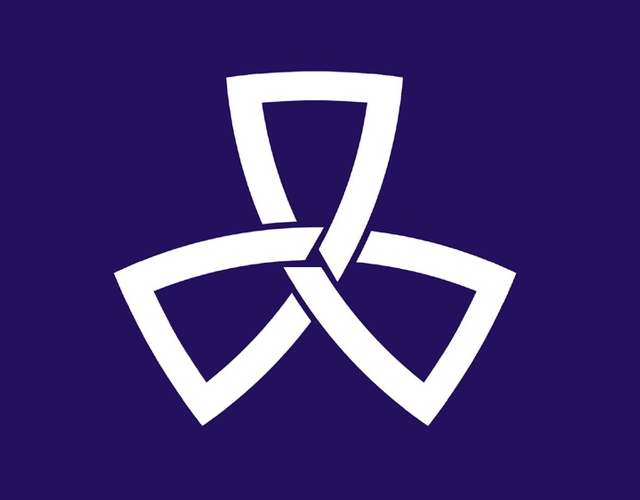
Shinagawa (Tōkyō): The kanji 品 (shina)
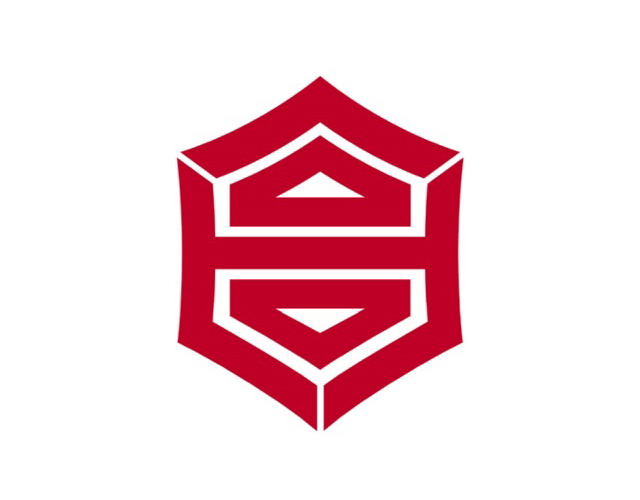
Kōchi (Kōchi): The kanji 高 (kō)
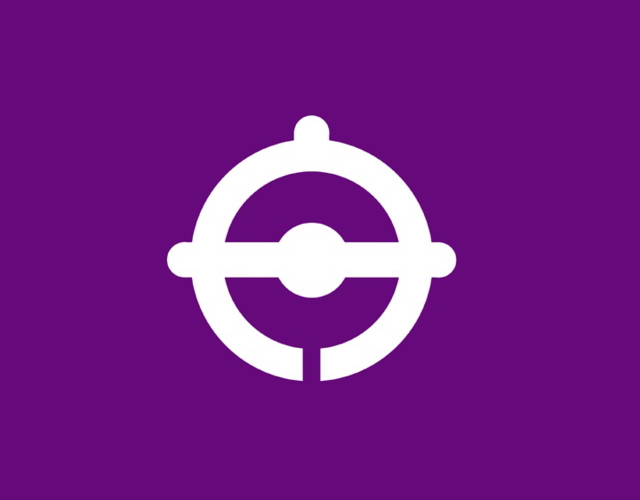
Funabashi (Chiba): The kanji 舟 (funa, or "boat")
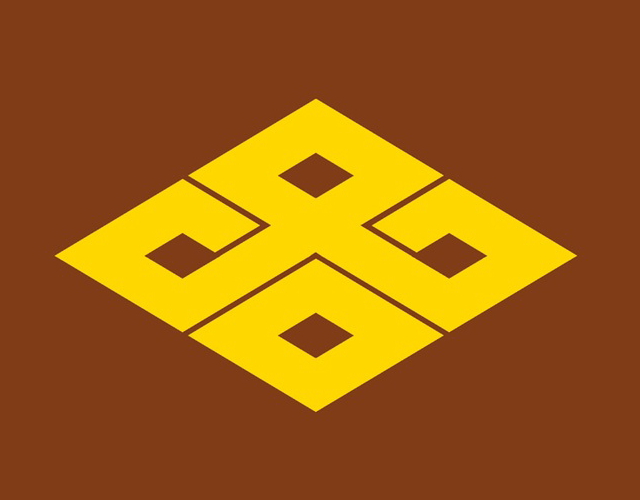
Kakamigahara (Gifu): The kanji 各 (kaku), the first character in 各務原 (Kakamigahara)
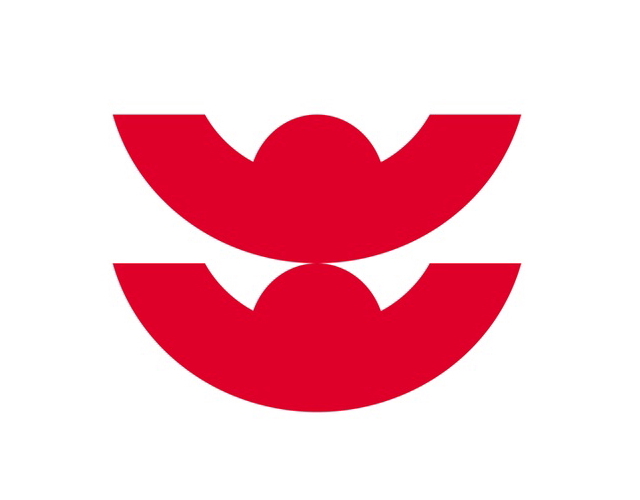
Izumo (Shimane): The kanji 出 (i)
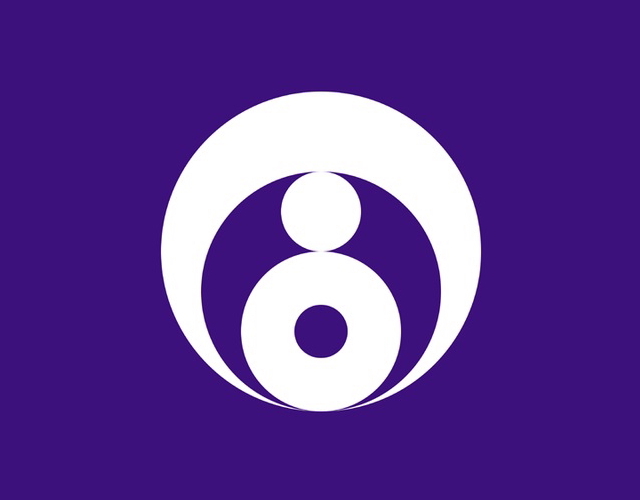
Ishinomaki (Miyagi): The kanji 石 (ishi)
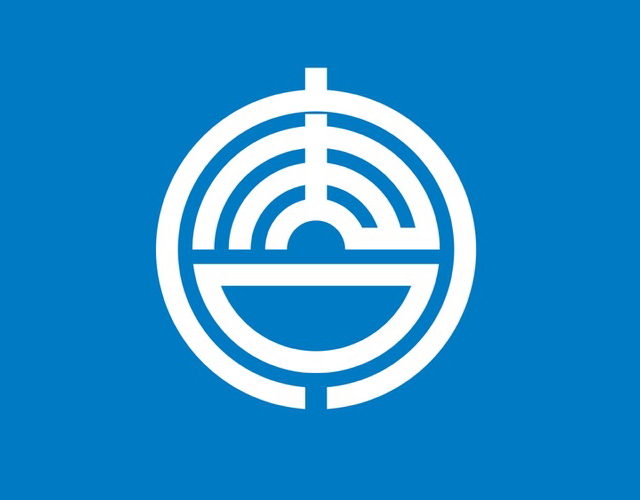
Karatsu (Saga): The kanji 唐 (kara)
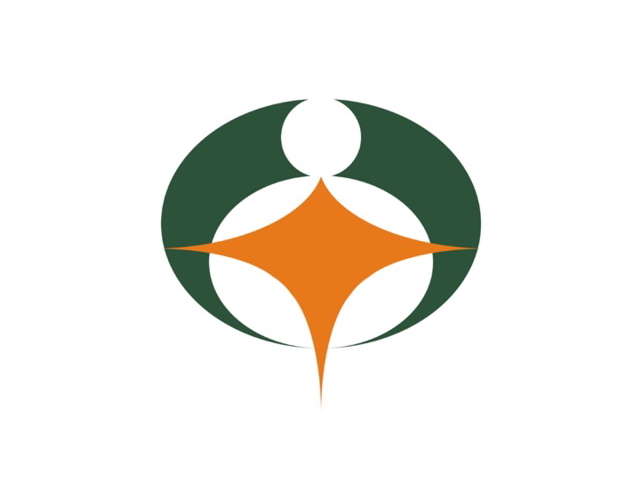
Kōka (Shiga): The kanji 甲 (kō)
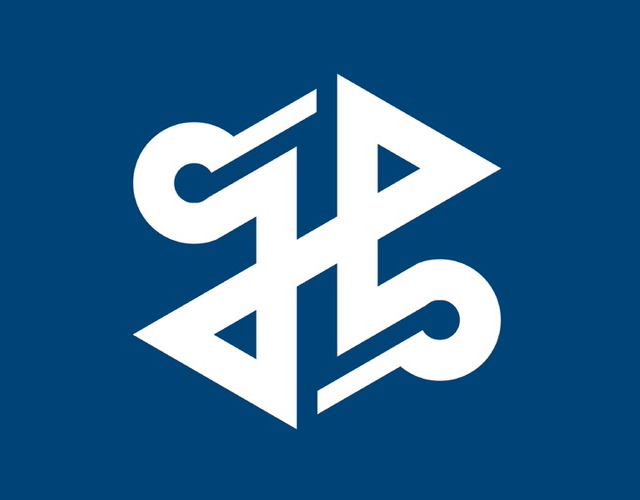
Shinjuku (Tōkyō): The kanji 新 (shin)
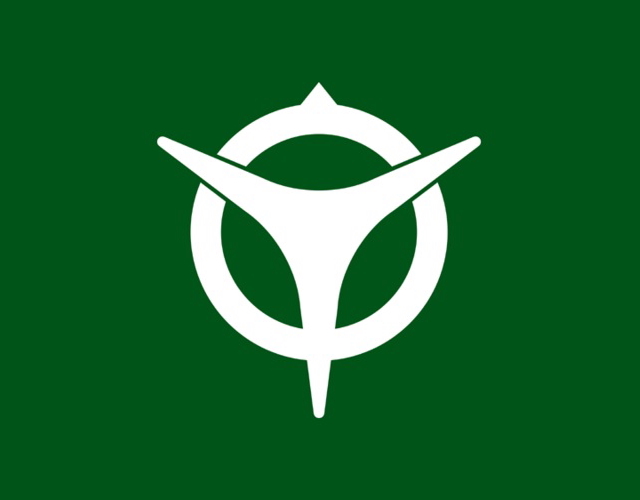
Uji (Kyōto): The kanji 宇 (u)
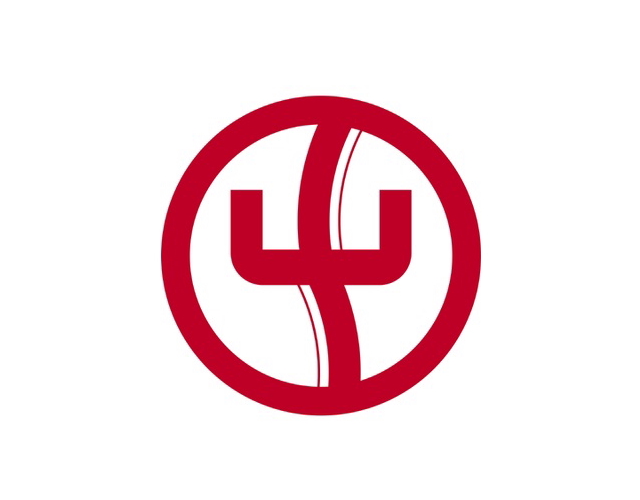
Nagareyama (Chiba): Seal script style kanji 流 (nagare), representing the Edogawa River

Nabari (Mie): The kanji 名 (na)
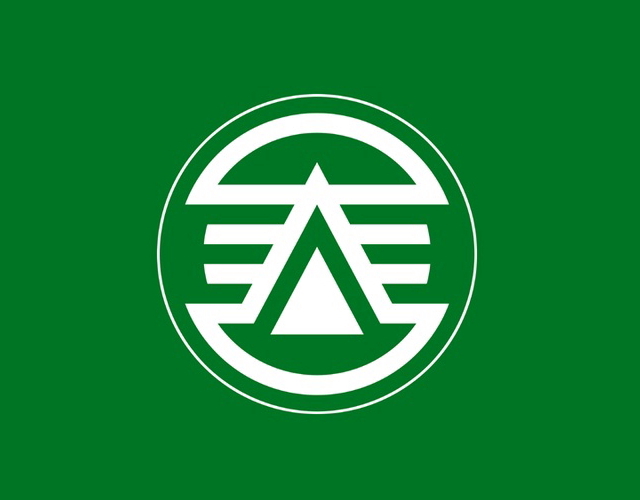
Kasuga (Fukuoka): 春 (haru), the first character in 春日 (Kasuga), shaped like local ancient tombs
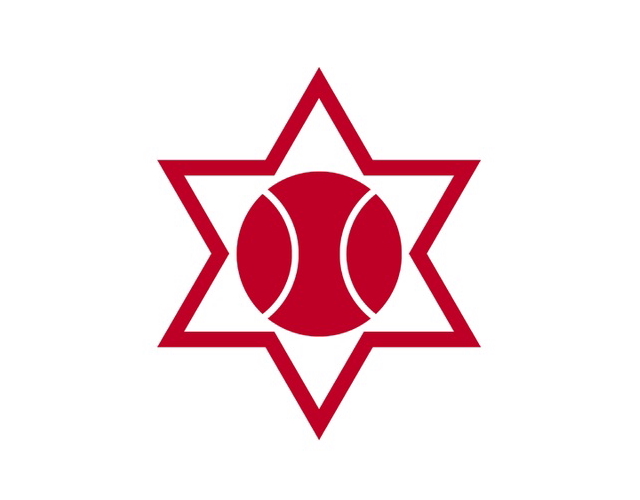
Otaru (Hokkaidō): The kanji 小 (o) inside a six-pointed star symbolizing snow
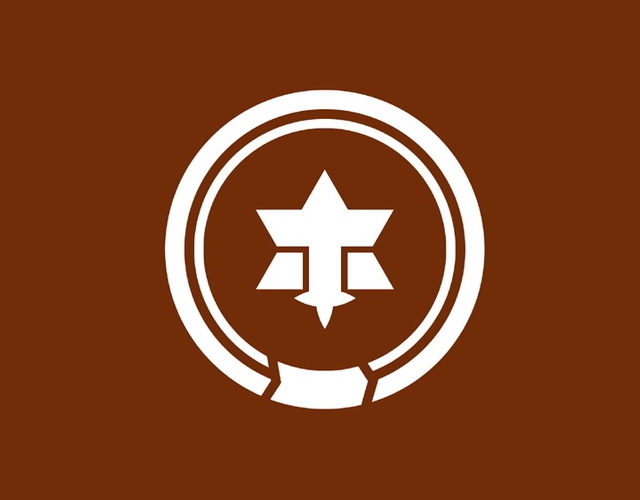
Matsumoto (Nagano): Pine (matsu) needles encircle the kanji 本 (moto)
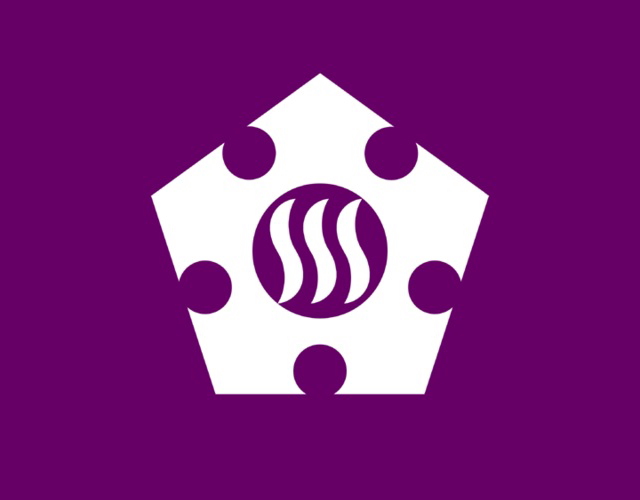
Tachikawa (Tōkyō): The kanji 立 (tachi) and 川 (kawa)
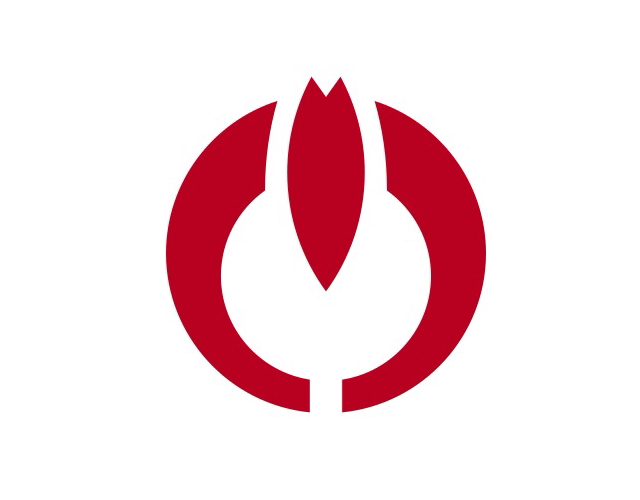
Koganei (Tōkyō): The kanji 小 (ko) shaped like a cherry blossom
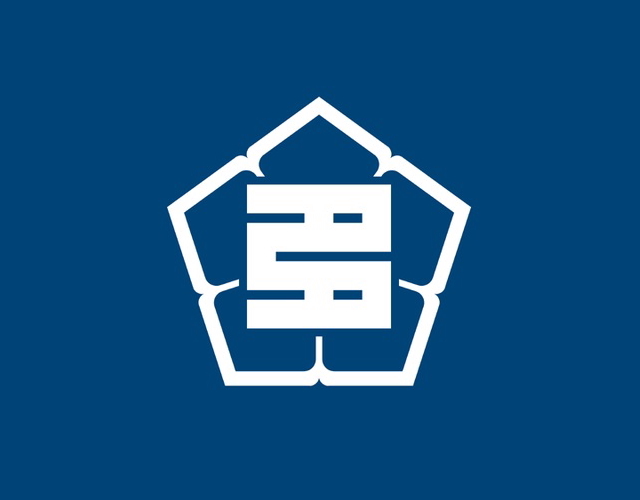
Tajimi (Gifu): The kanji 多 (ta) and a Chinese bellflower
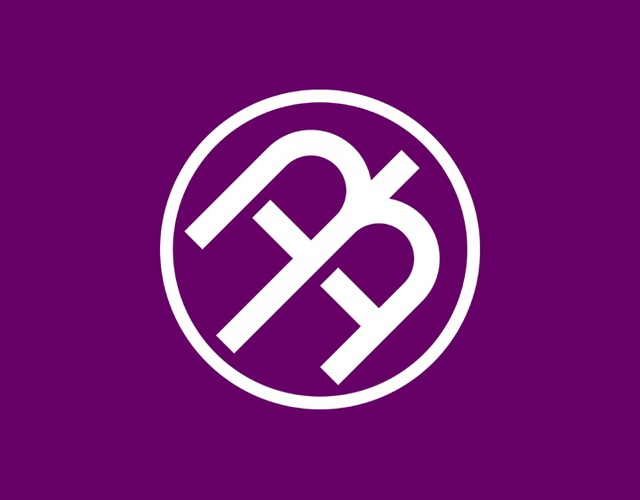
Tama (Tōkyō): The kanji 多 (ta) shaped like a pigeon
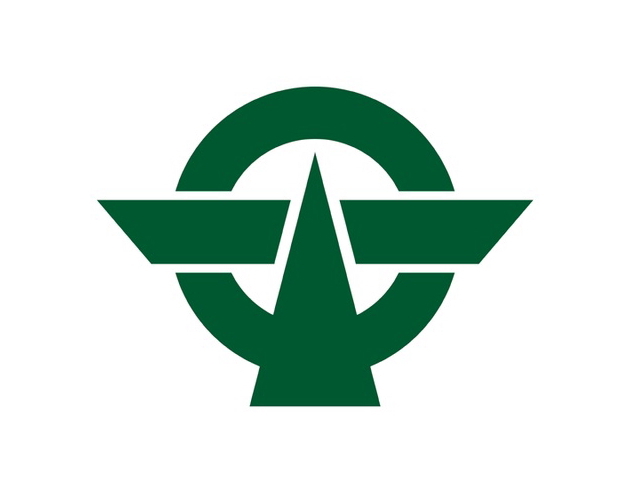
Kodaira (Tōkyō): The kanji 小平 (Kodaira)
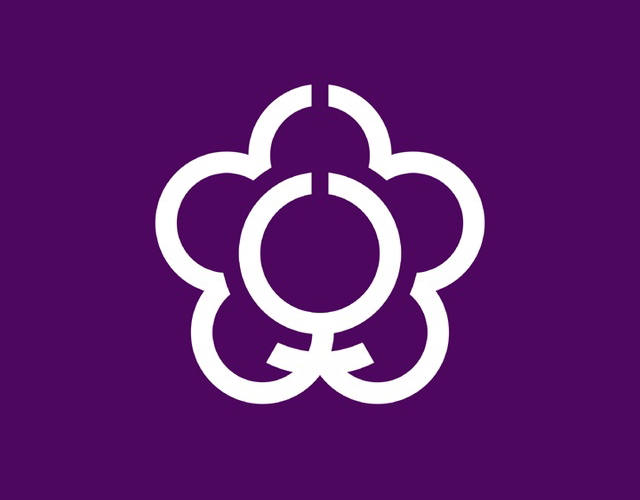
Tenri (Nara): The plum blossom-shaped 天 (ten) is similar to the symbol of the Tenrikyo religion
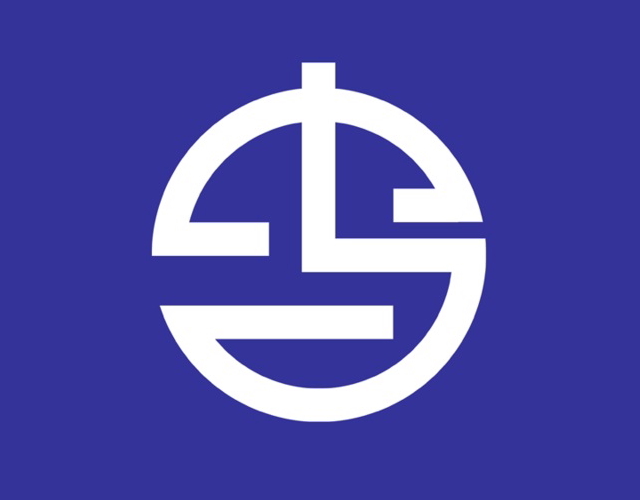
Yonaguni (Okinawa): The kanji 与 (yo)

Monbetsu (Hokkaidō): The kanji 紋 (mon)
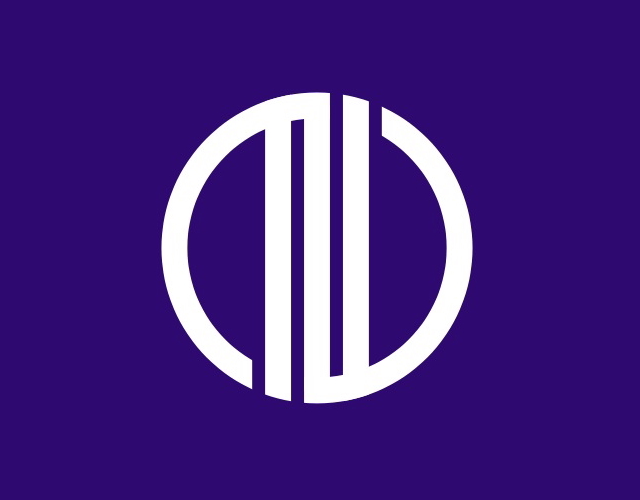
Sendai (Miyagi): The kanji 仙 (sen)
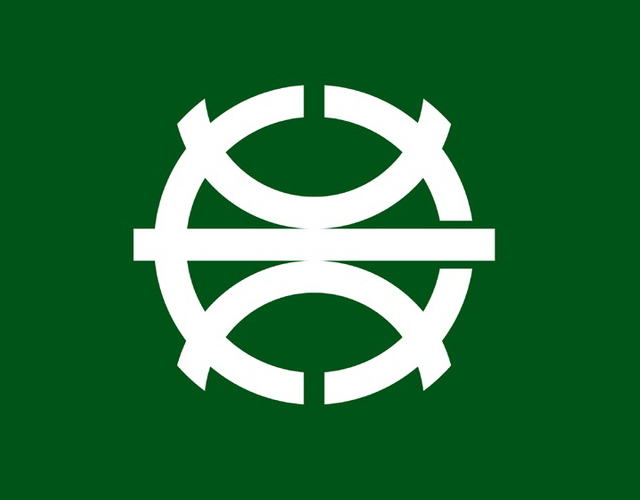
Suzuka (Mie): The kanji 鈴 (suzu) shaped like a bell
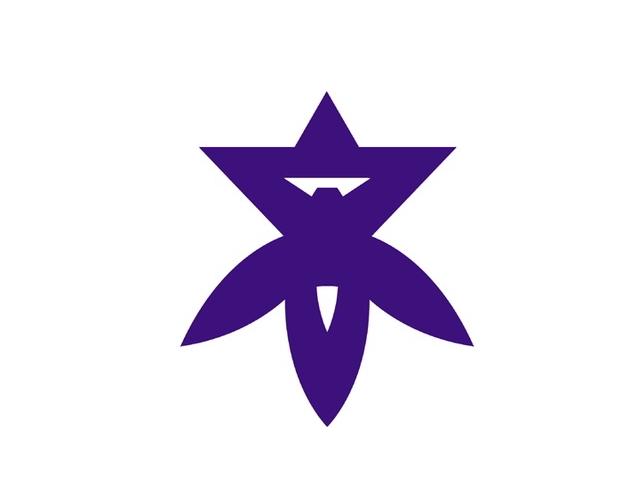
Takatsuki (Ōsaka): The kanji 高 (taka)
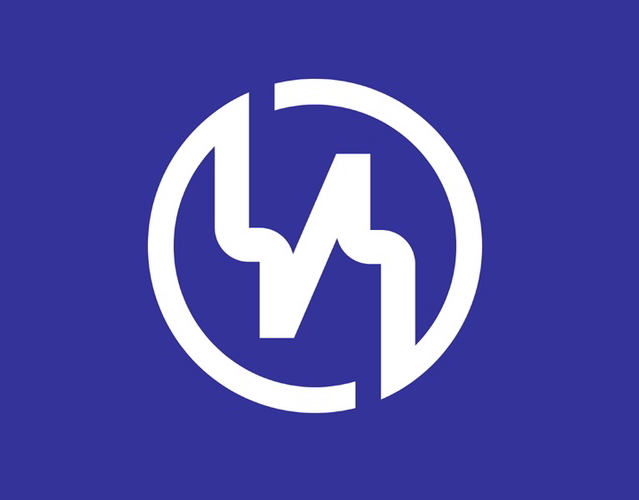
Taketomi (Okinawa): The kanji 竹 (take)
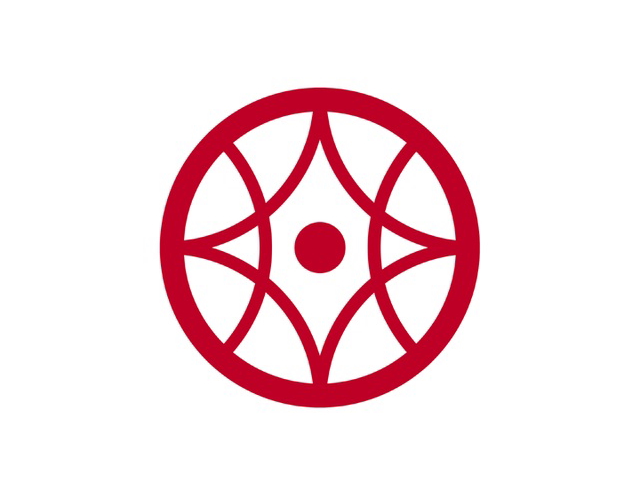
Yokkaichi (Mie): The kanji 四日 (yokka)
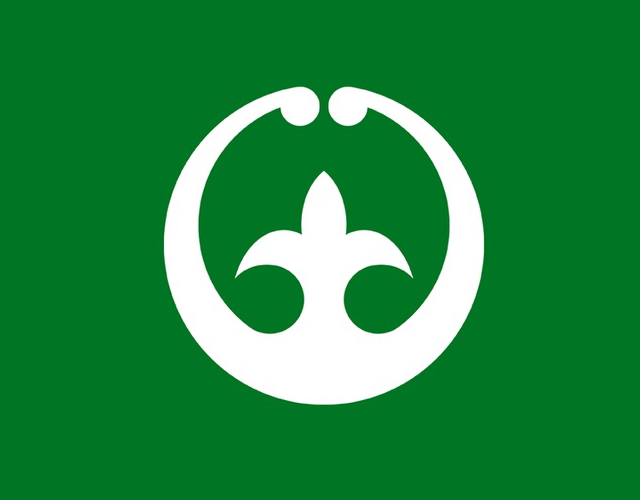
Tsuchiura (Ibaraki): The kanji 土 (tsuchi) represents a flower and the waves on Lake Kasumigaura
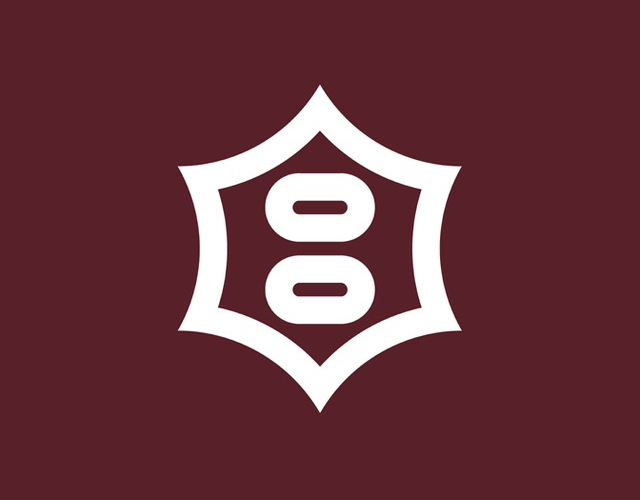
Utsunomiya (Tochigi): The kanji 宮 (miya) looks like a turtle shell, a reference to Utsunomiya Castle
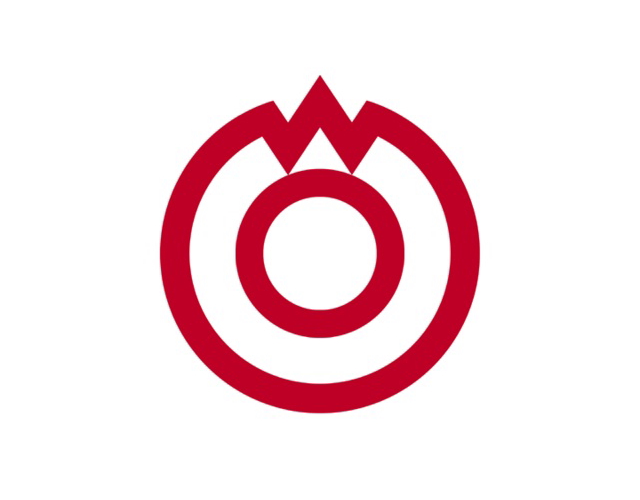
Yamaguchi (Yamaguchi): The kanji 山口 (Yamaguchi)
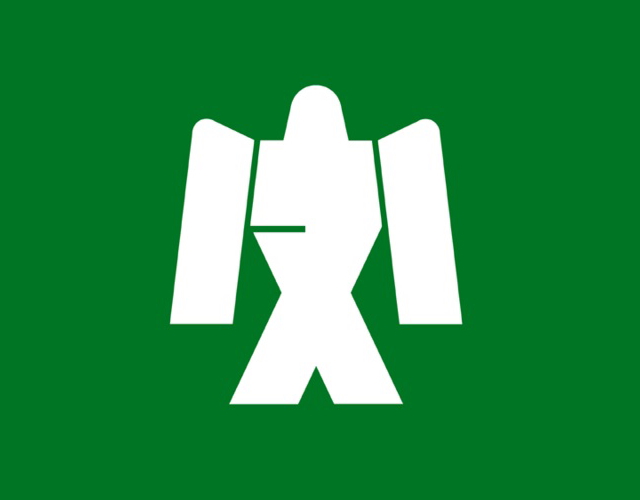
Hachijō (Tōkyō): The kanji 八丈 (Hachijō) arranged in the shape of a bird
Related: Hiragana/katakana town logos
[Link: Wikipedia]
Here's a look at a few stylish custom scooters straight from the streets of Japan.
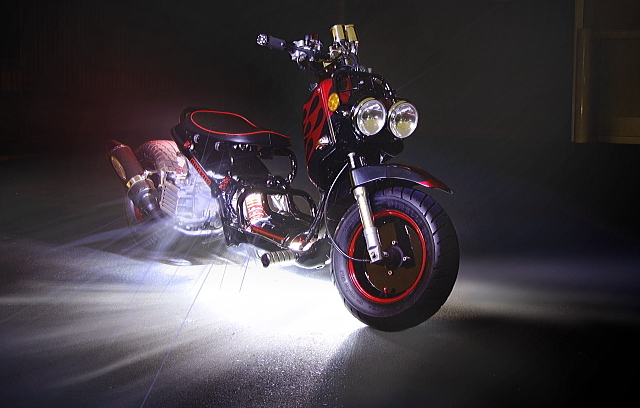
Honda Zoomer [via]
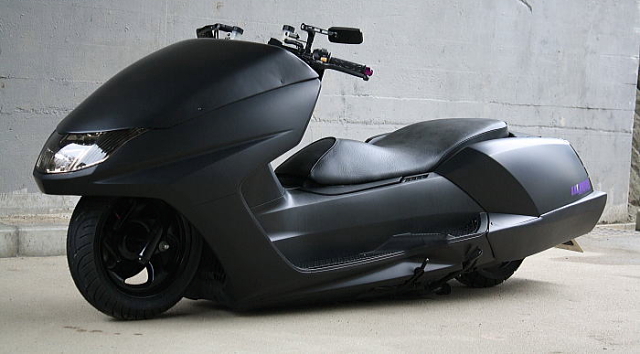
Yamaha Maxam [via]
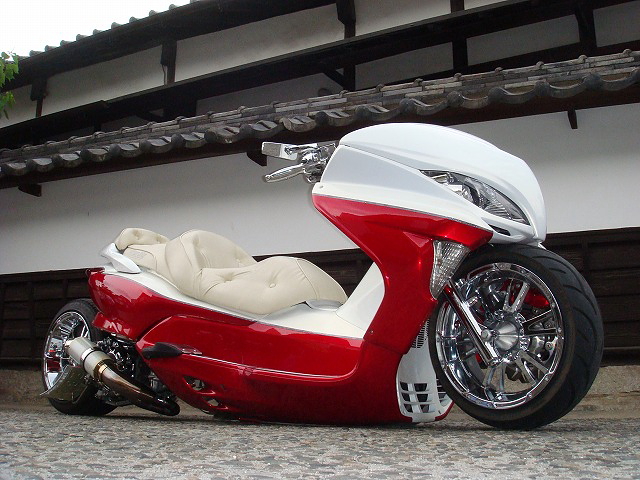
Honda Forza MF08 [via]
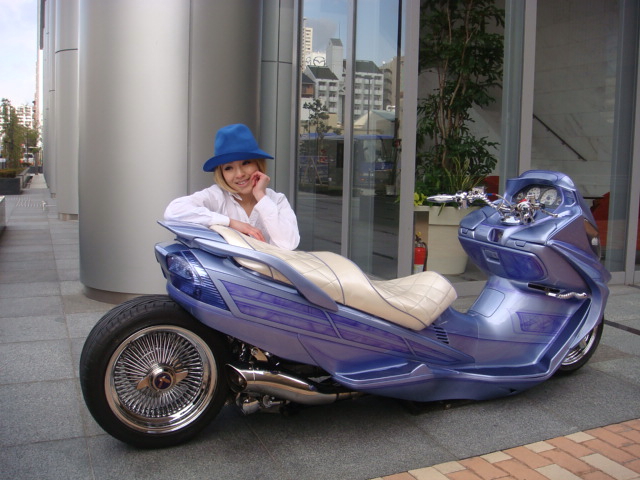
Suzuki Sky Wave 43 [via]

Honda Fusion [via]
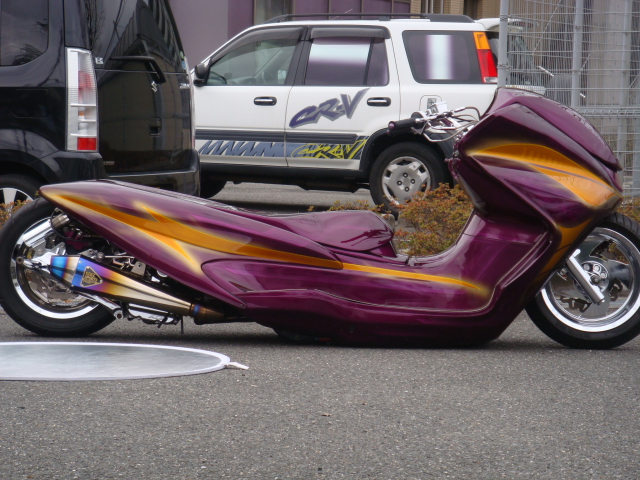
Yamaha Majesty [via]
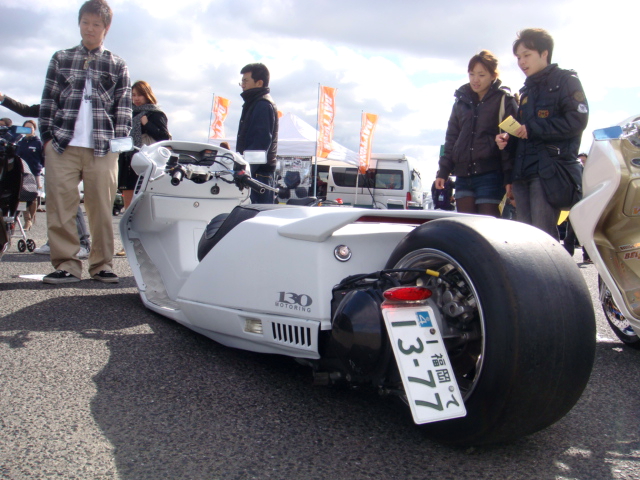
Honda Fusion [via]
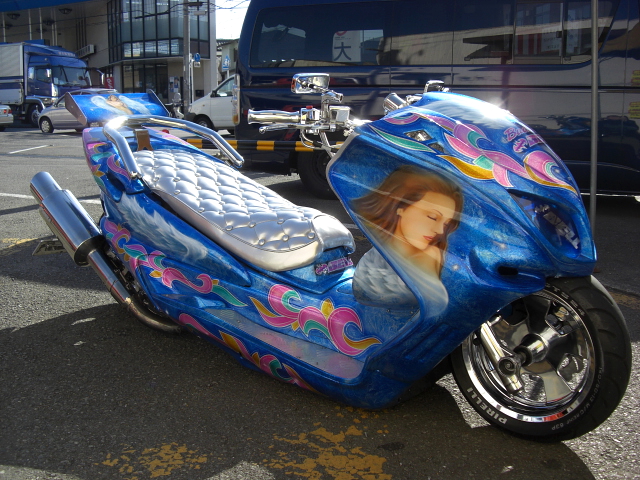
[via]
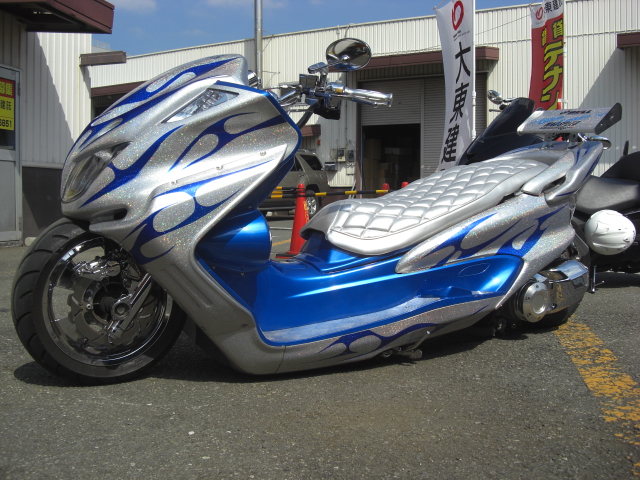
[via]
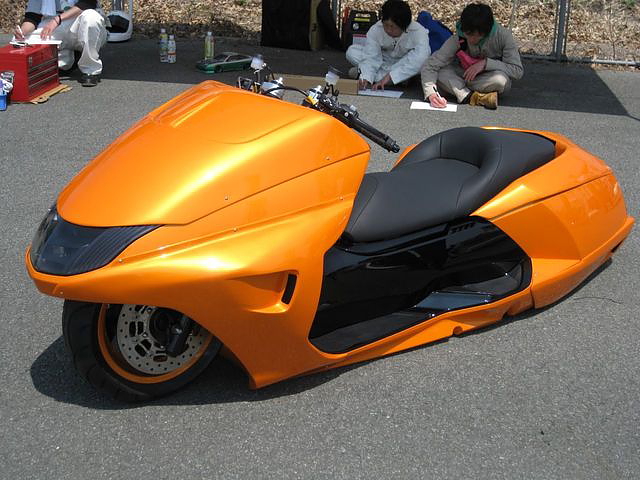
Yamaha Maxam [via]
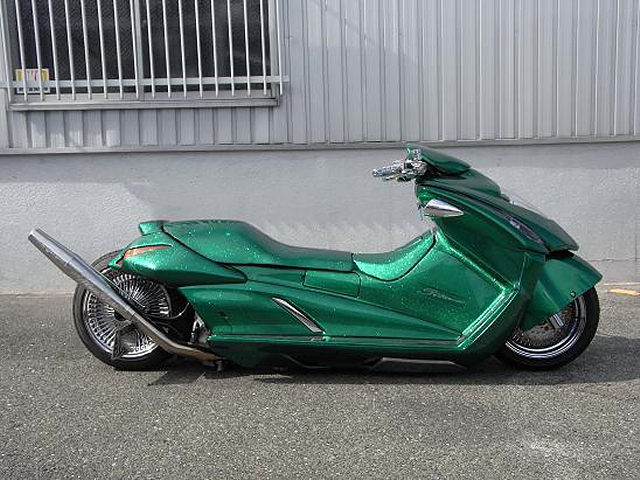
Suzuki Gemma [via]
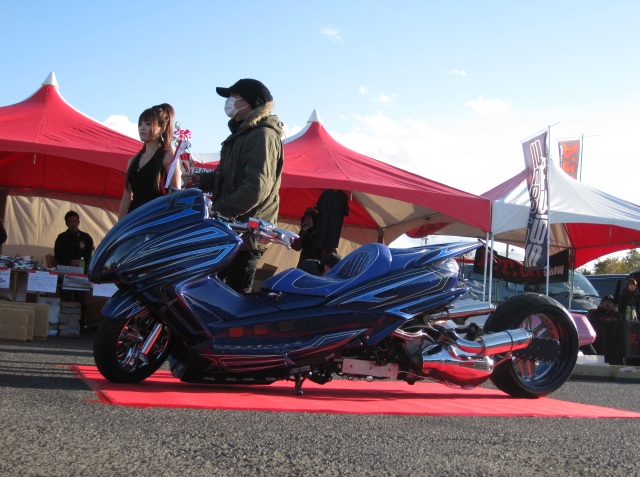
Yamaha Majesty 4D9 [via]
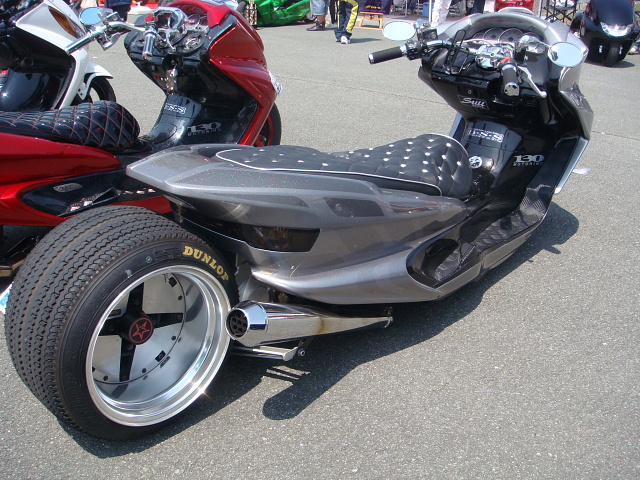
[via]
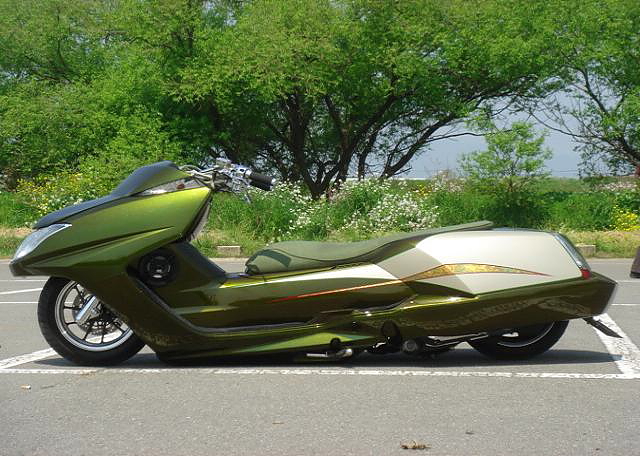
Yamaha Maxam [via]

Yamaha Majesty 4D9 [via]
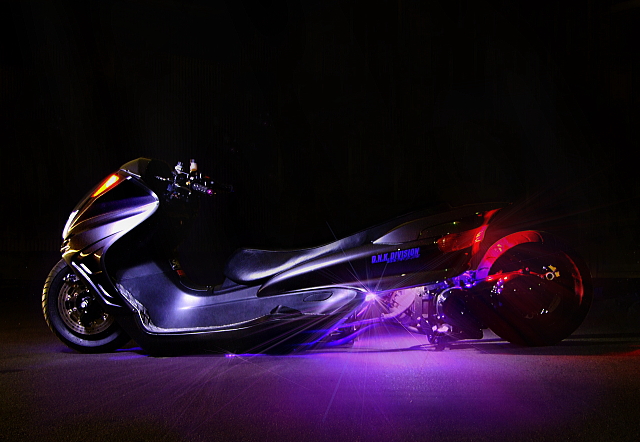
Yamaha Majesty-C [via]
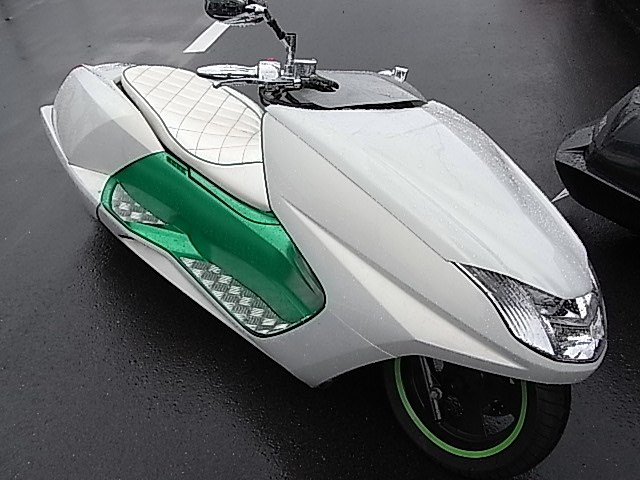
Yamaha Maxam [via]
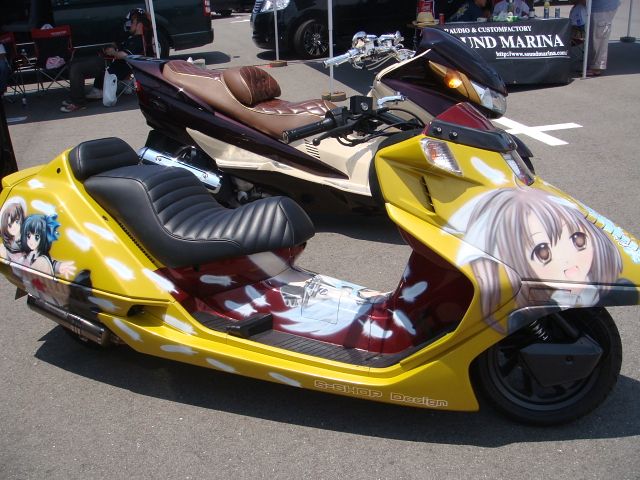
[via]
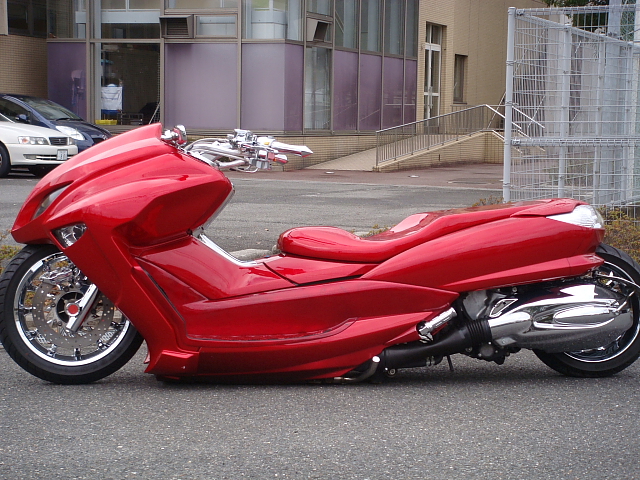
Yamaha Majesty 4D3 [via]
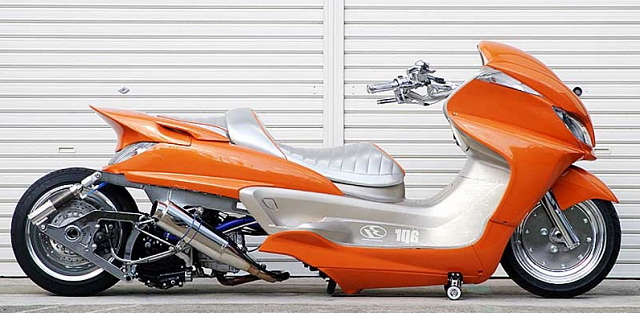
Yamaha Grand Majesty [via]
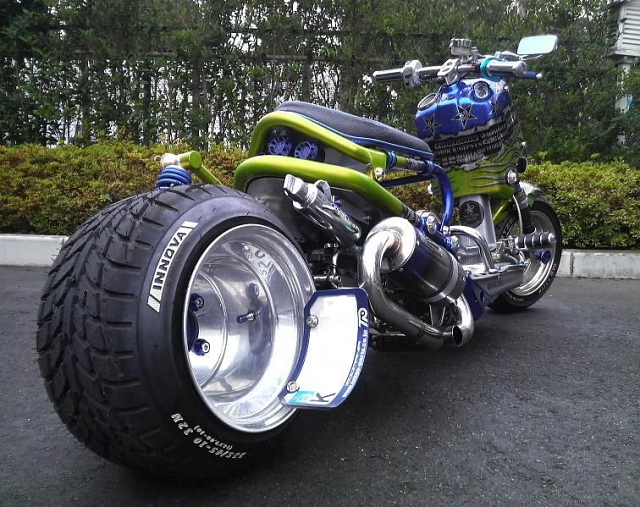
Honda Zoomer [via]
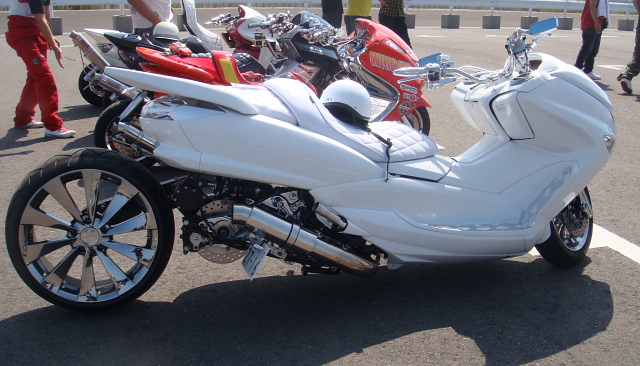
[via]
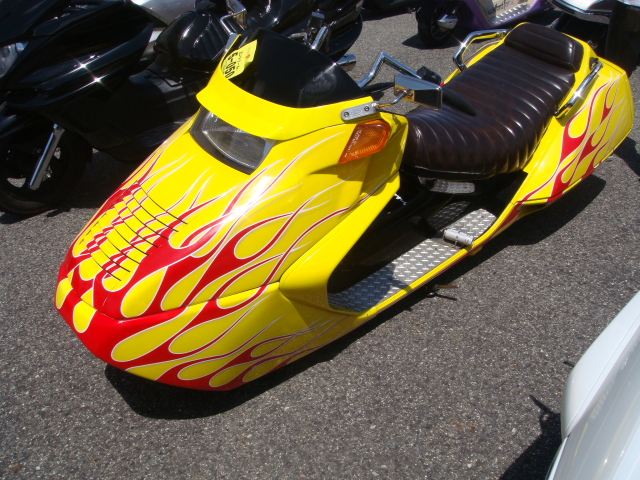
[via]
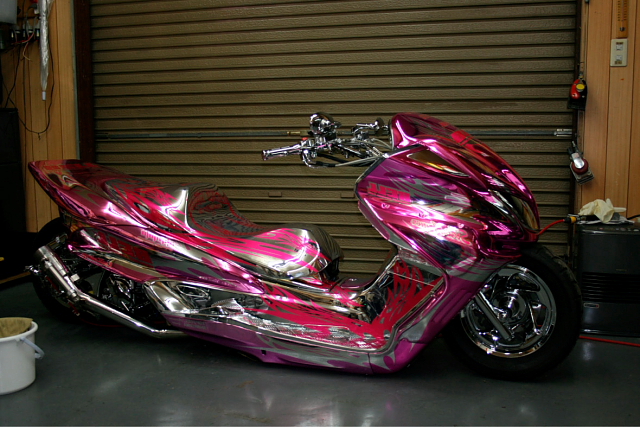
[via]
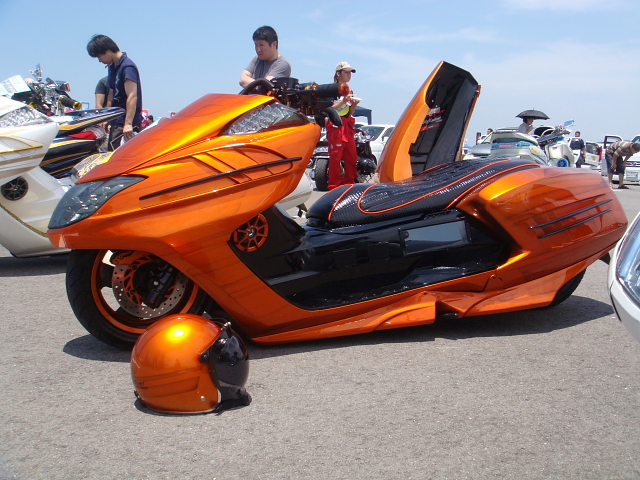
[via]
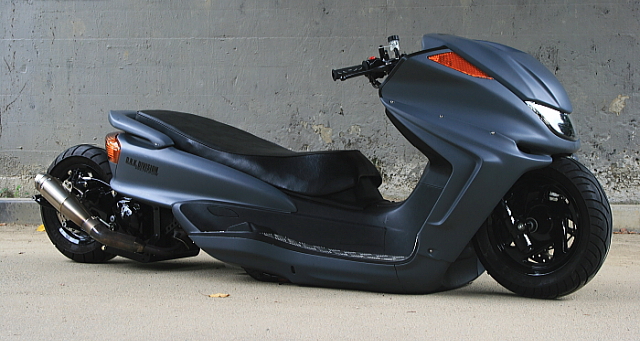
Yamaha Majesty-C [via]
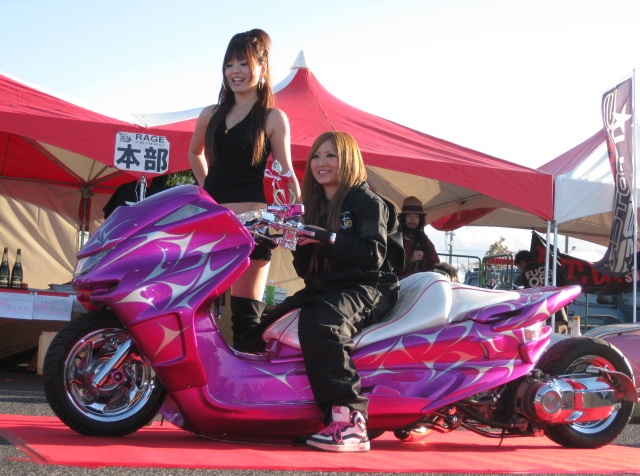
Yamaha Majesty [via]
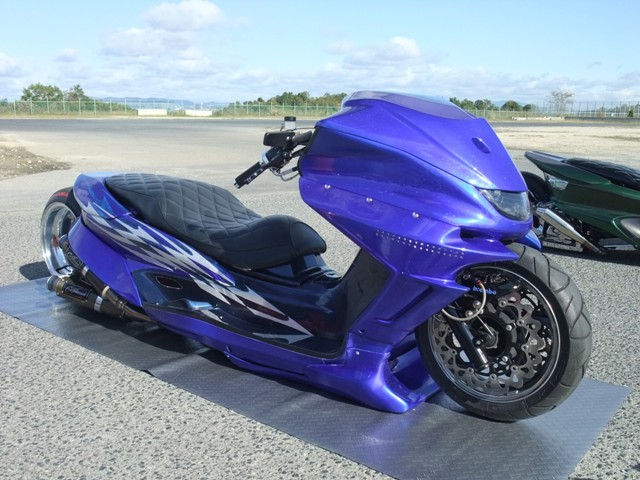
[via]
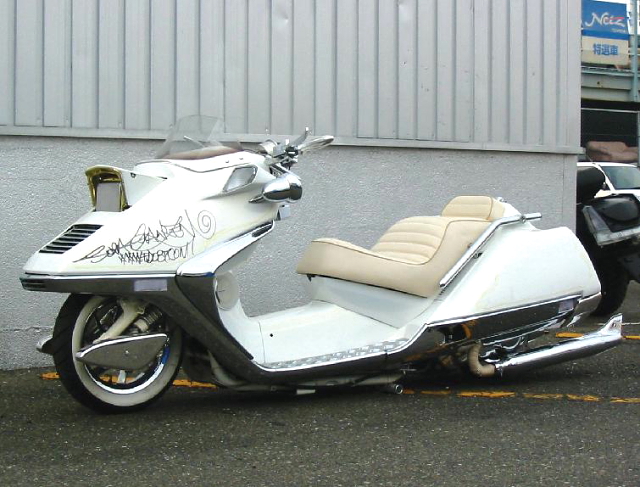
Honda Fusion [via]
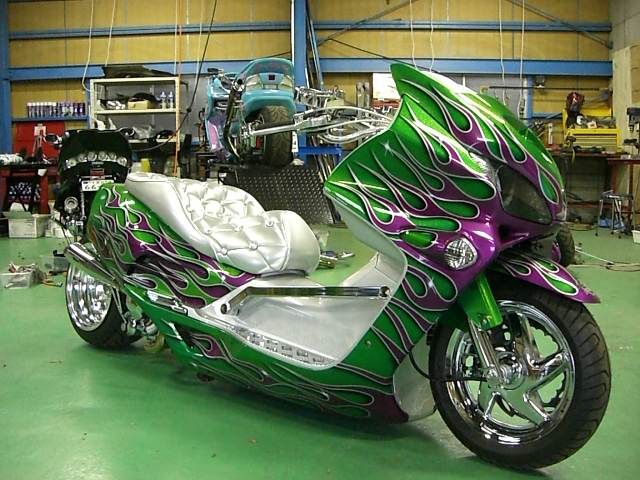
[via]
Related: Bosozoku-style rides